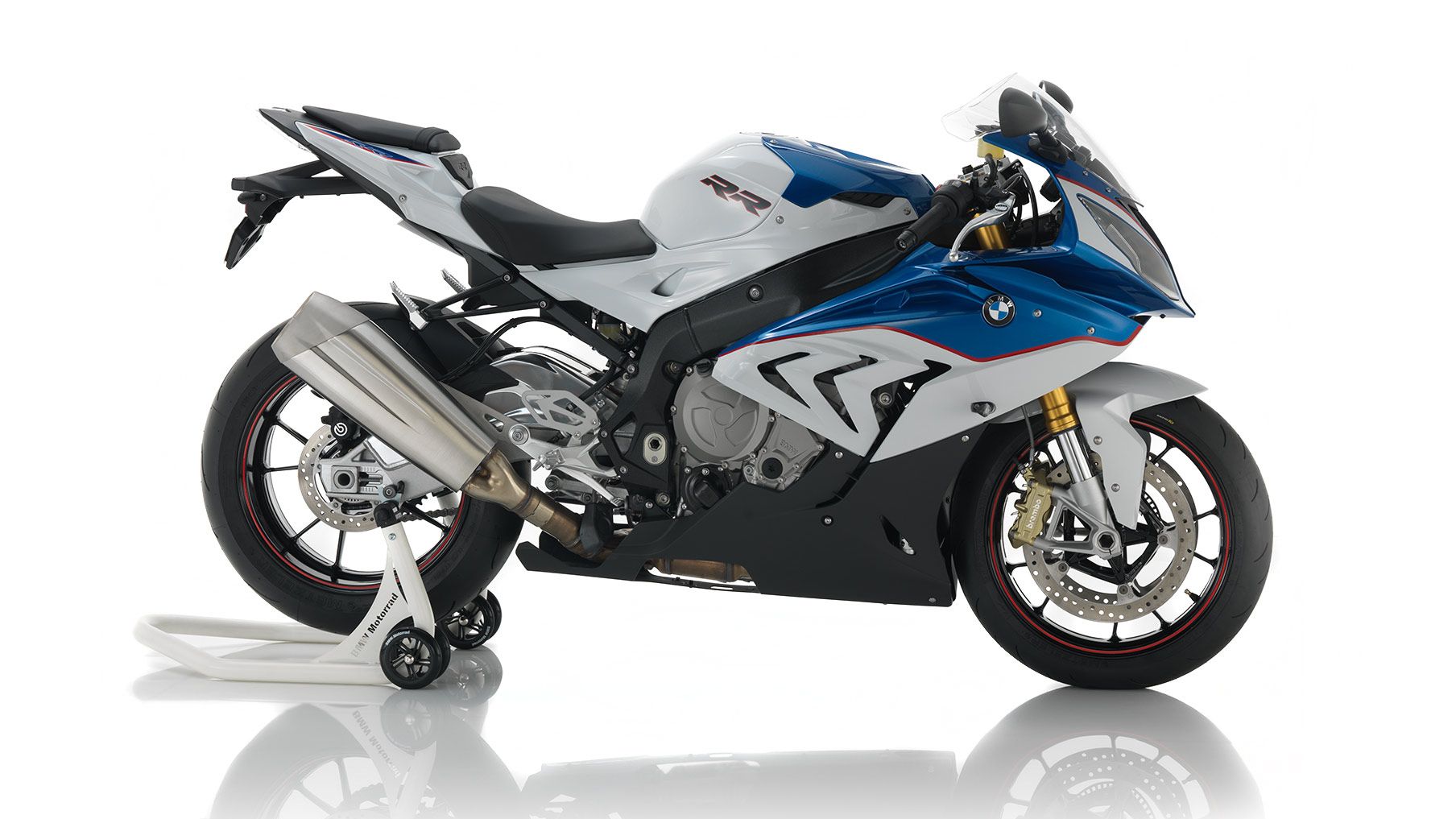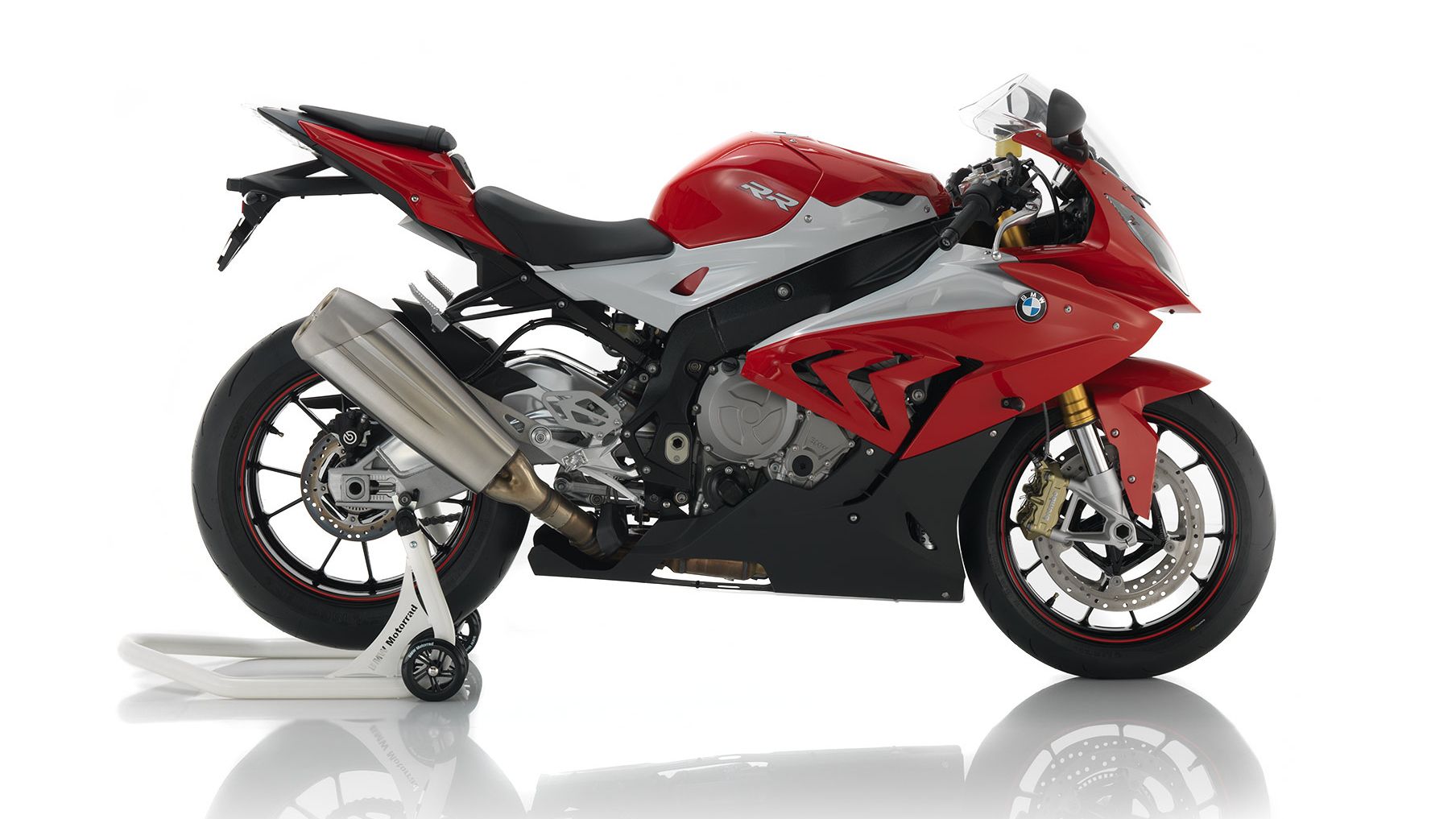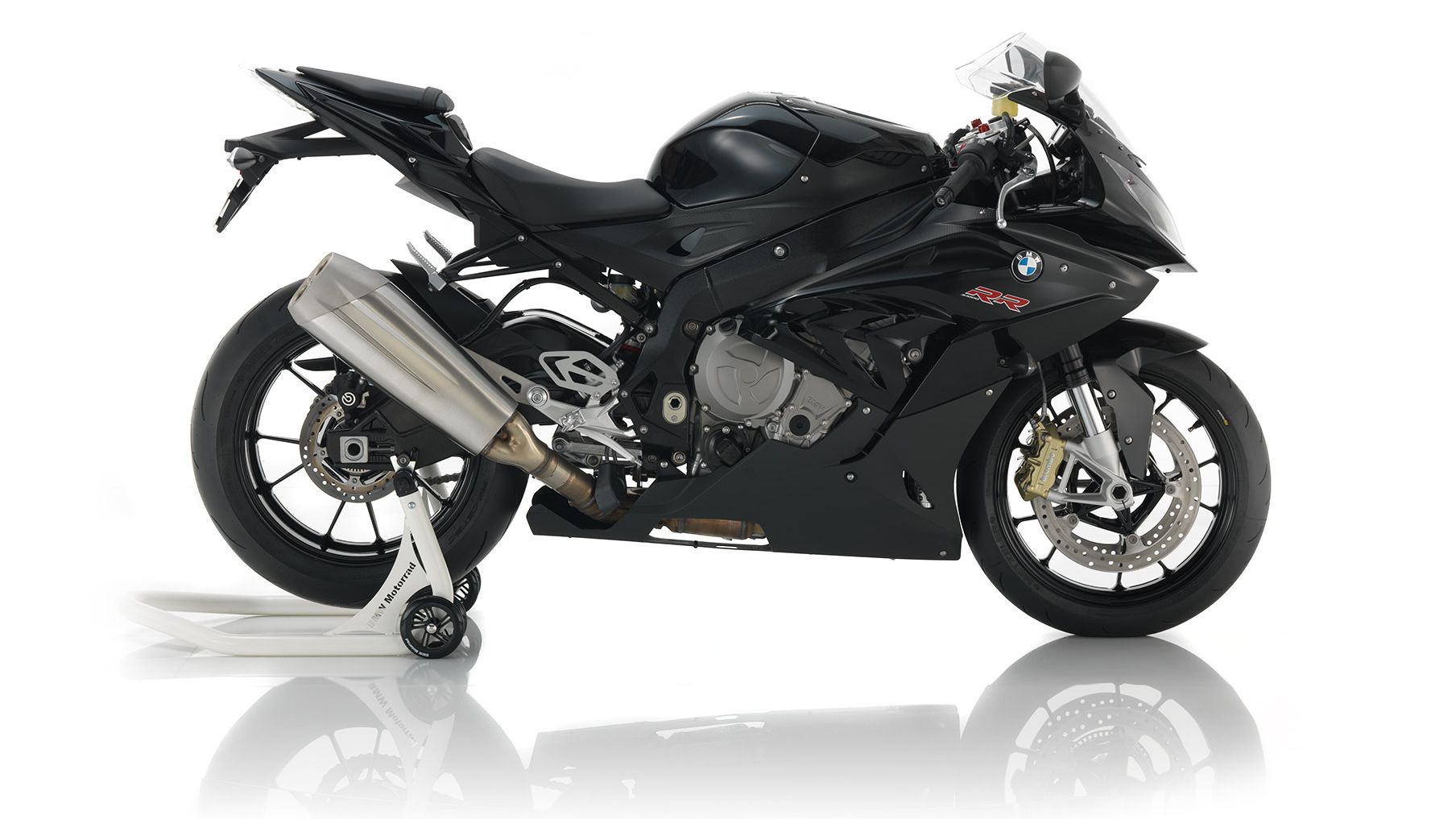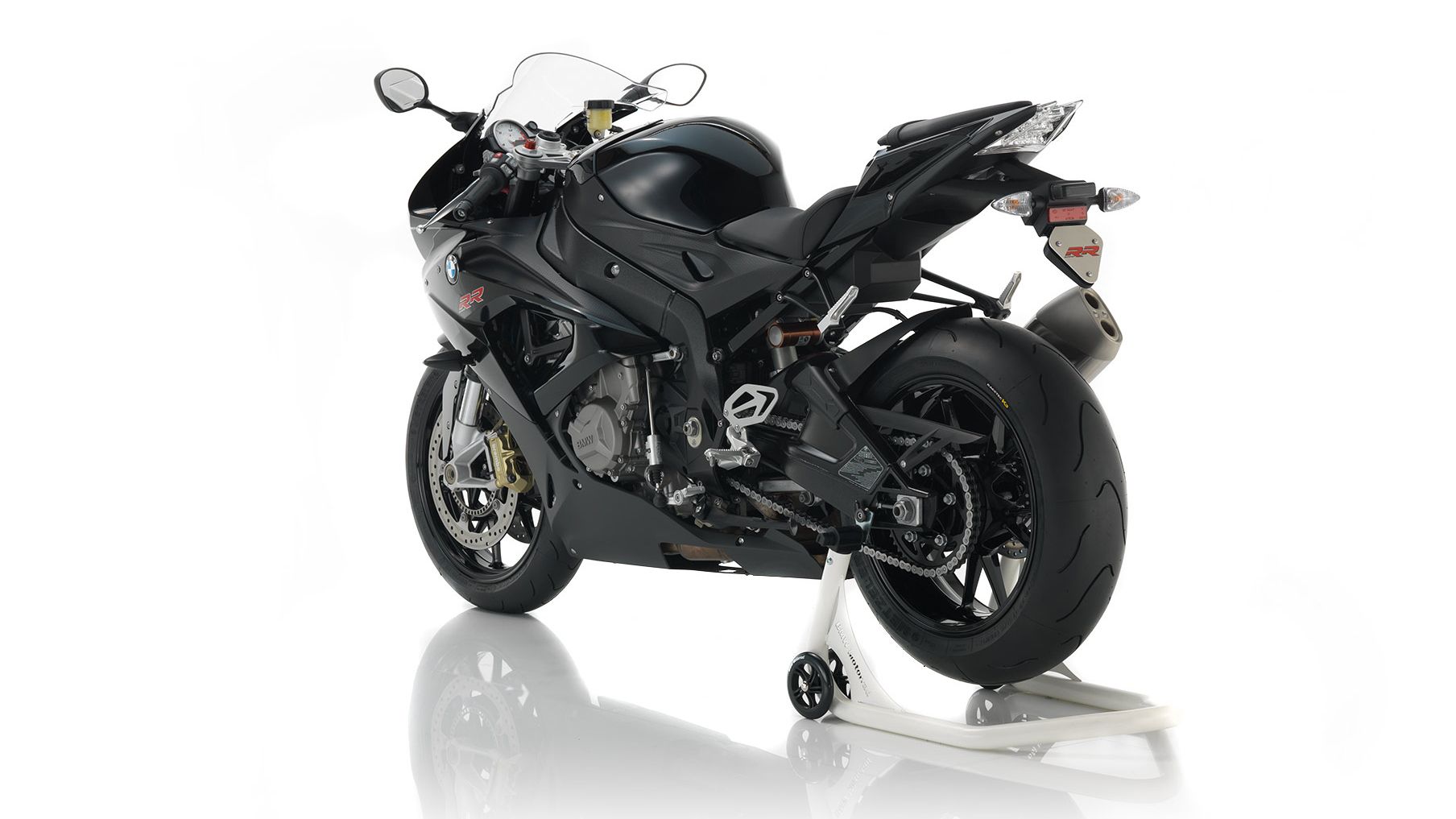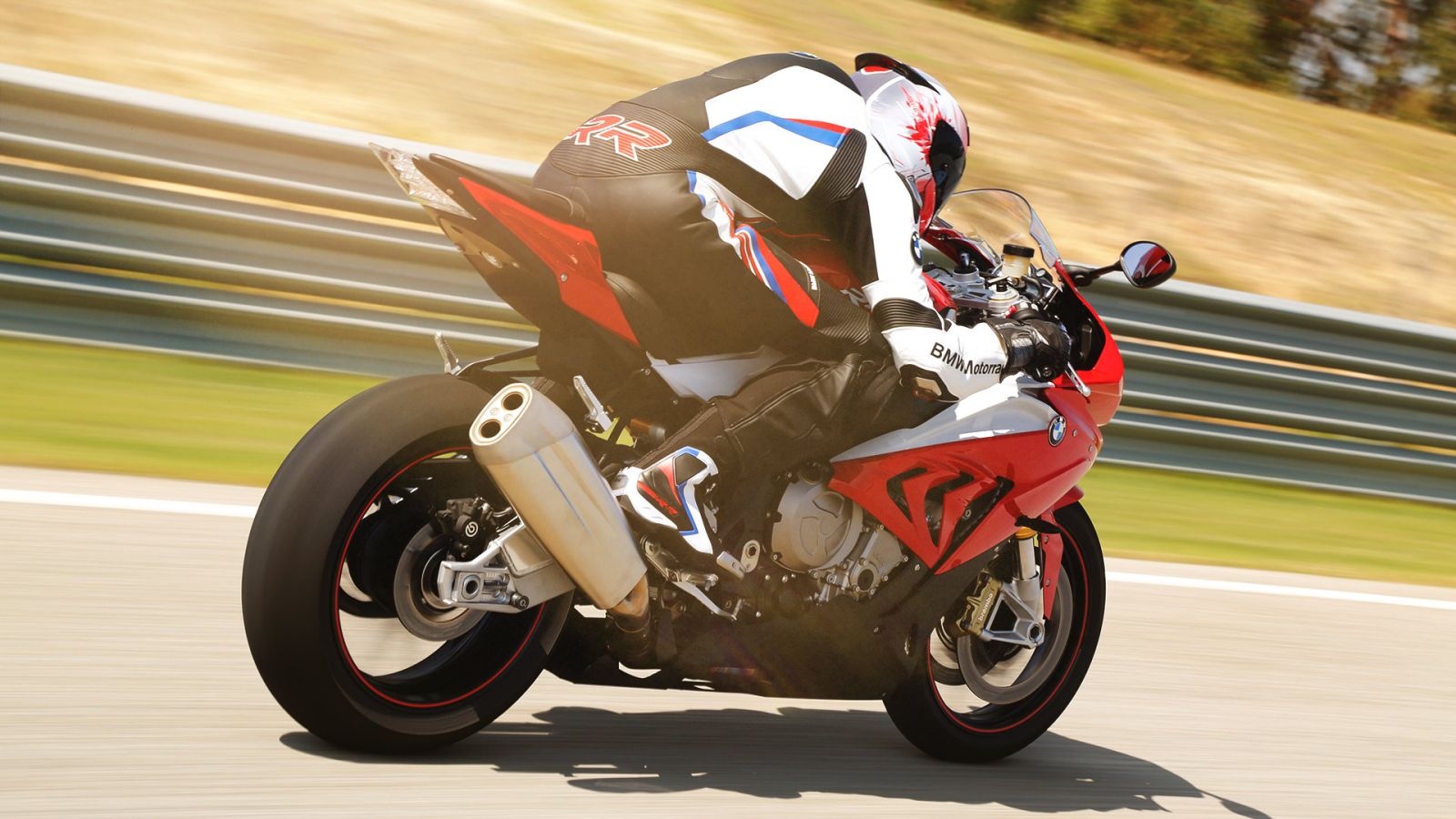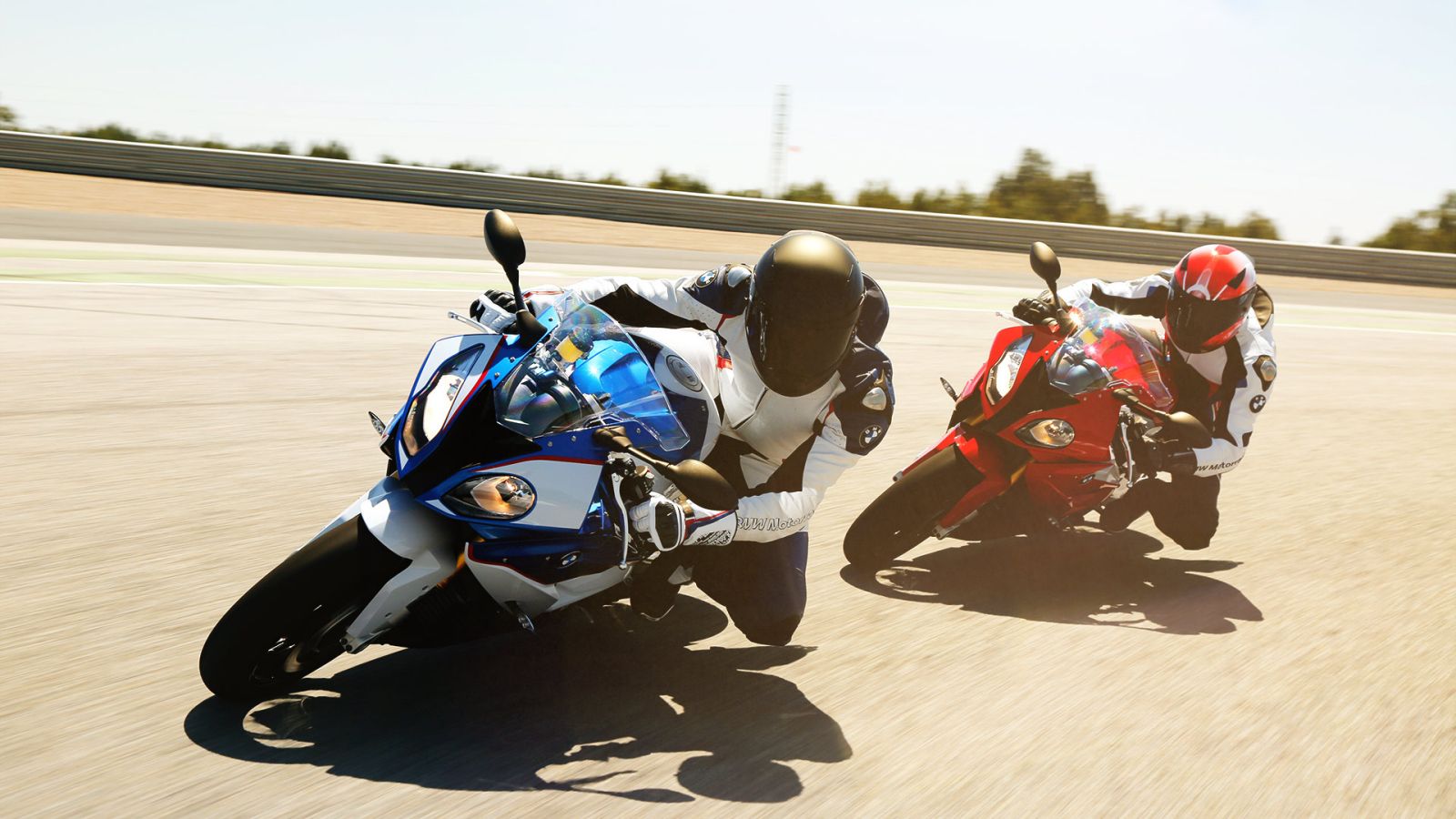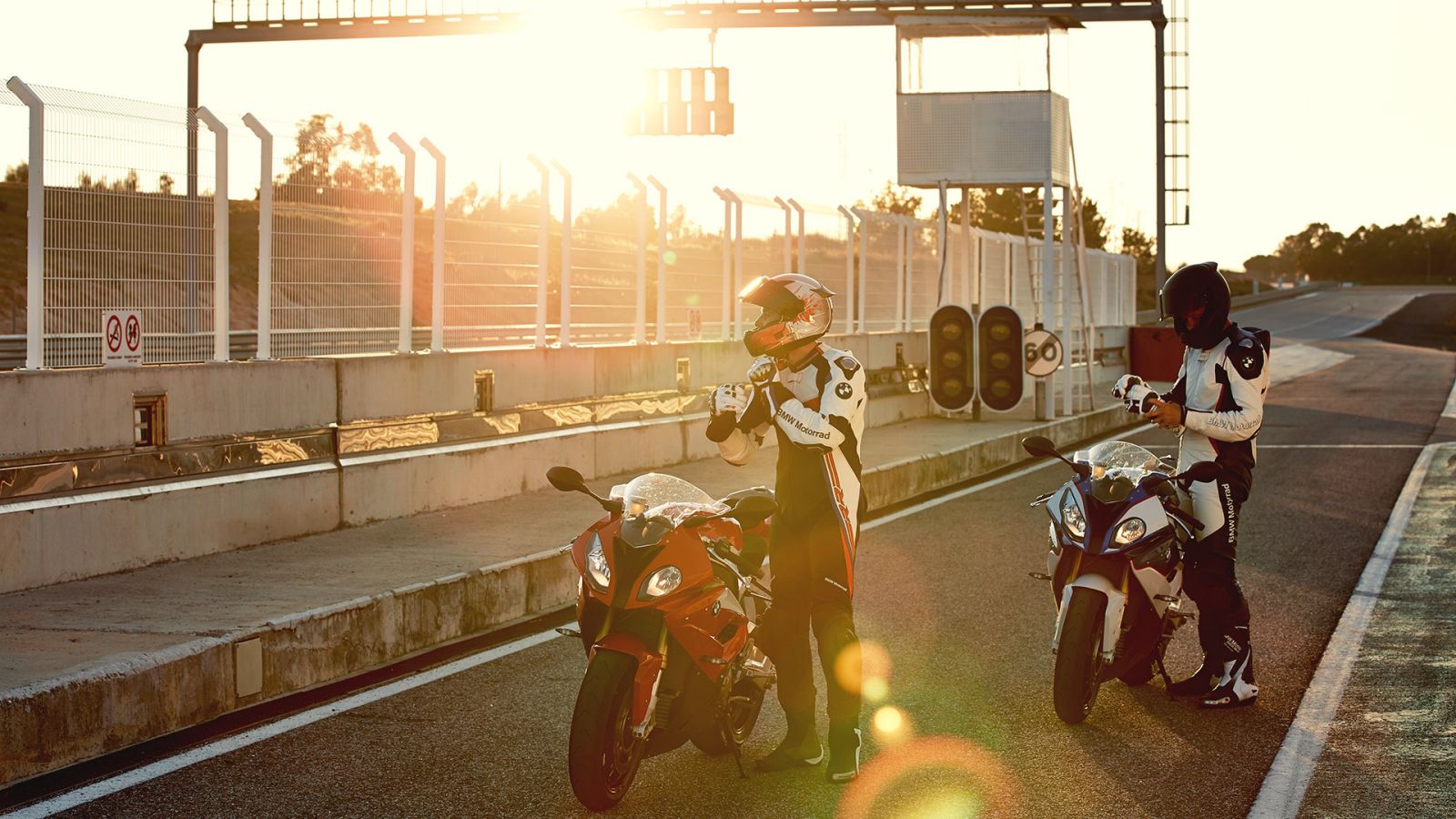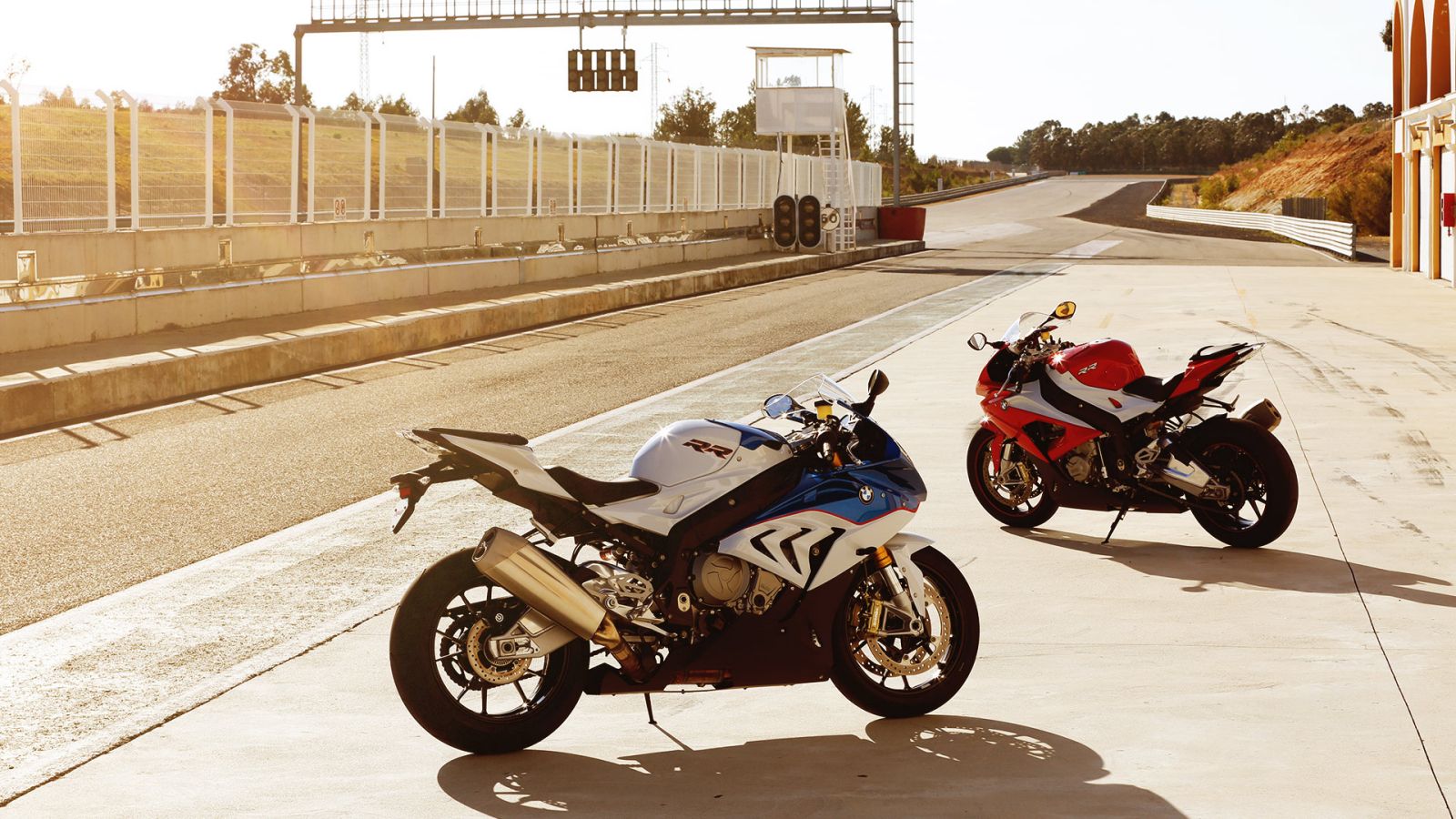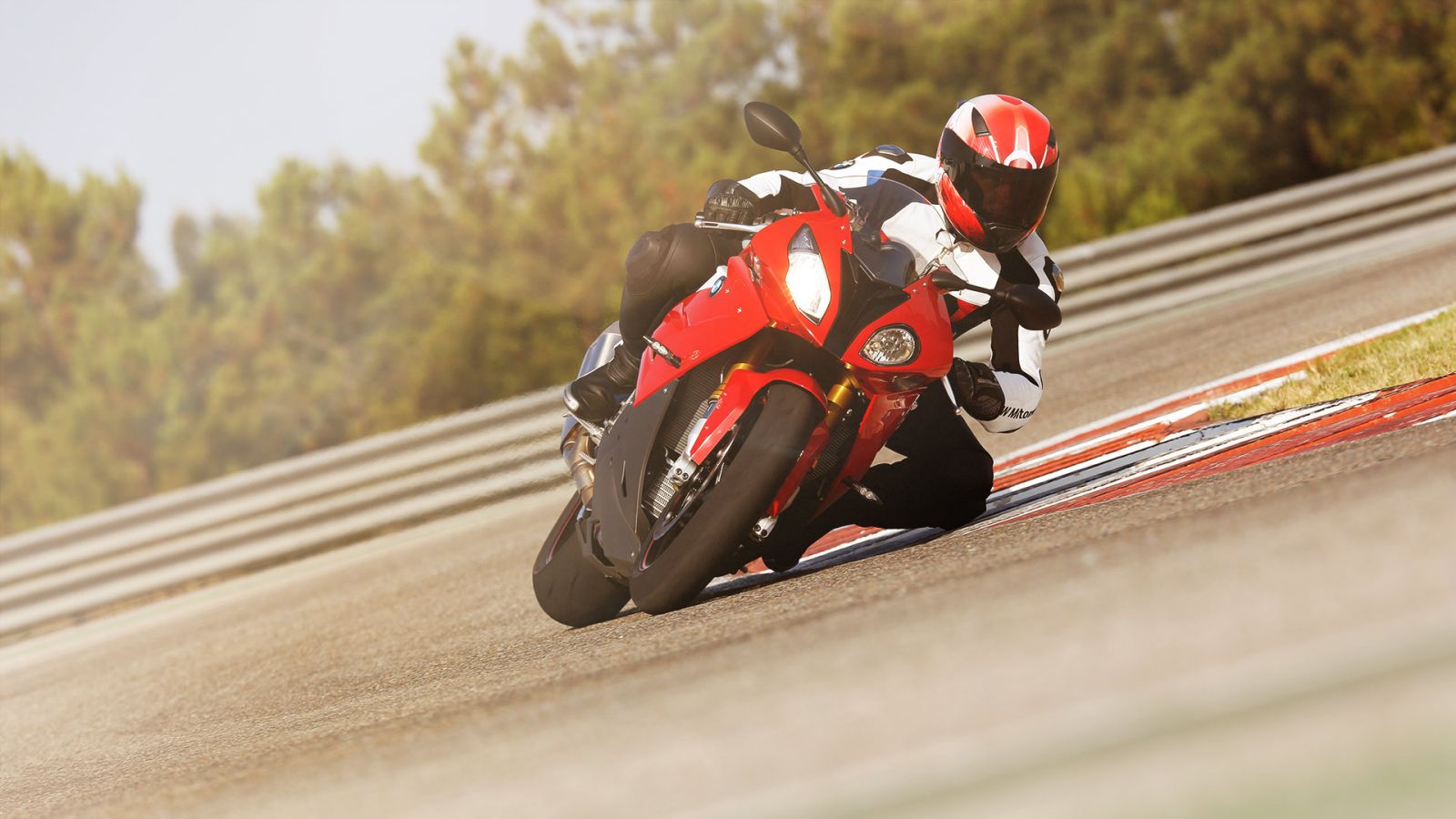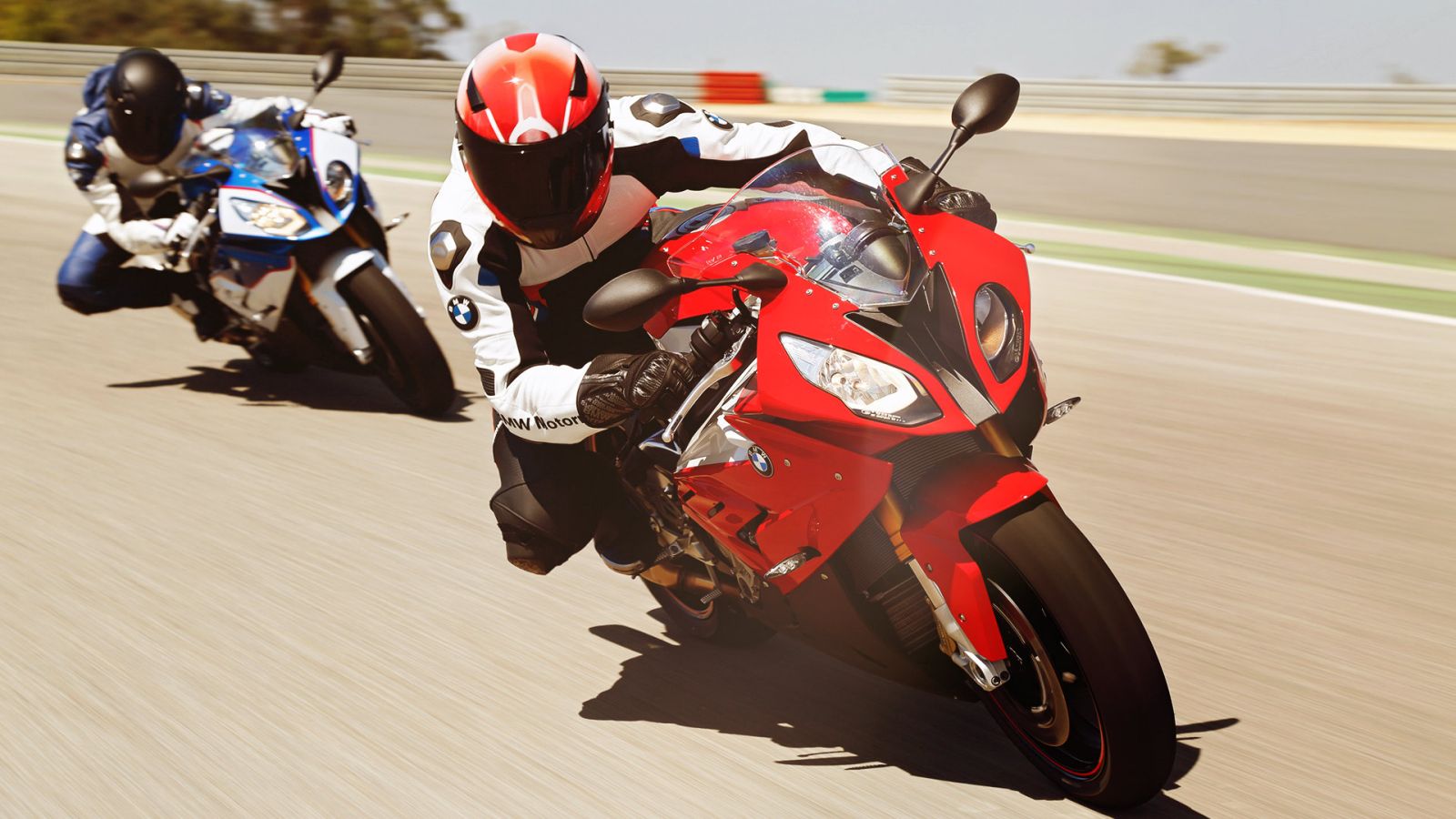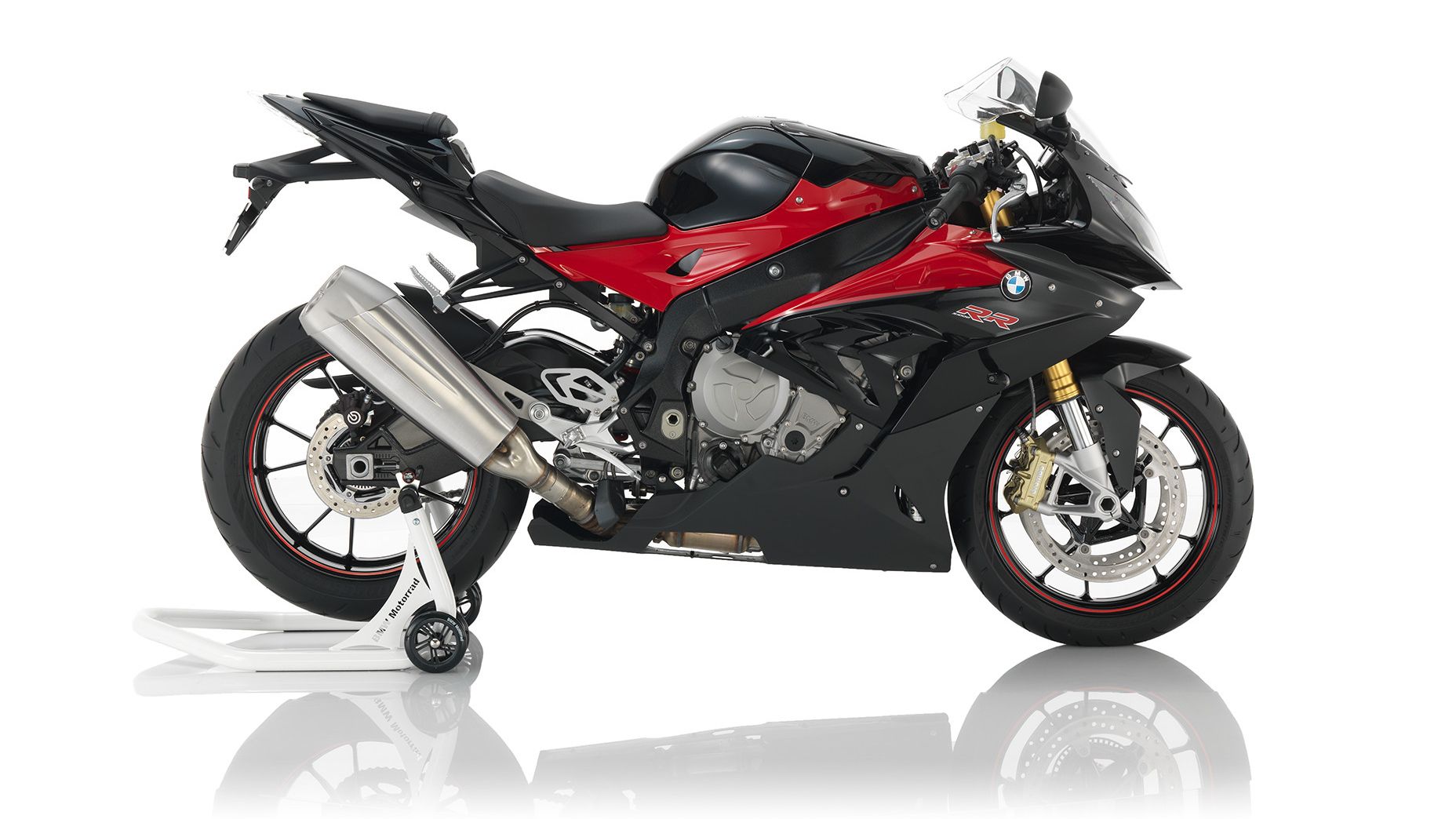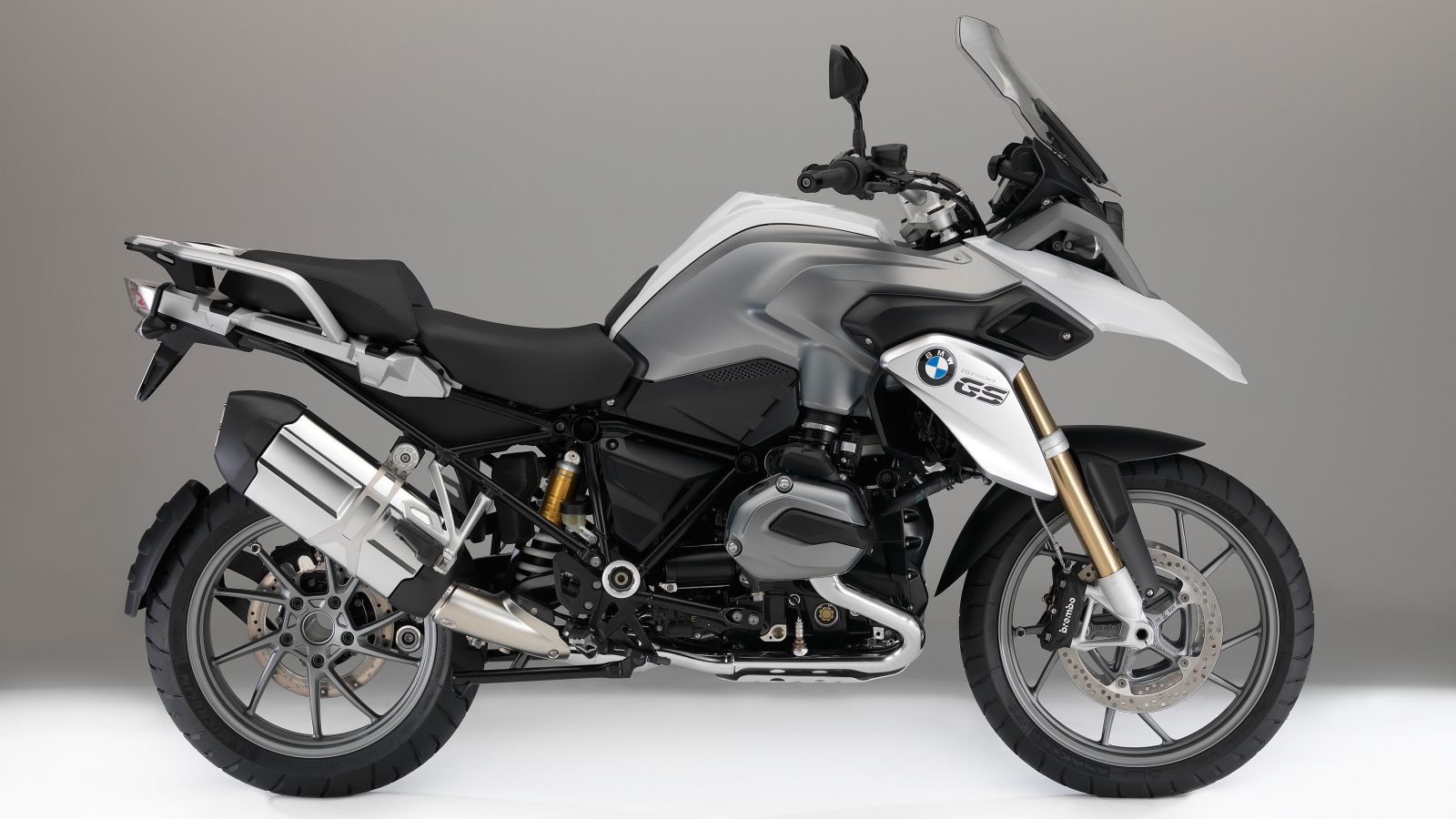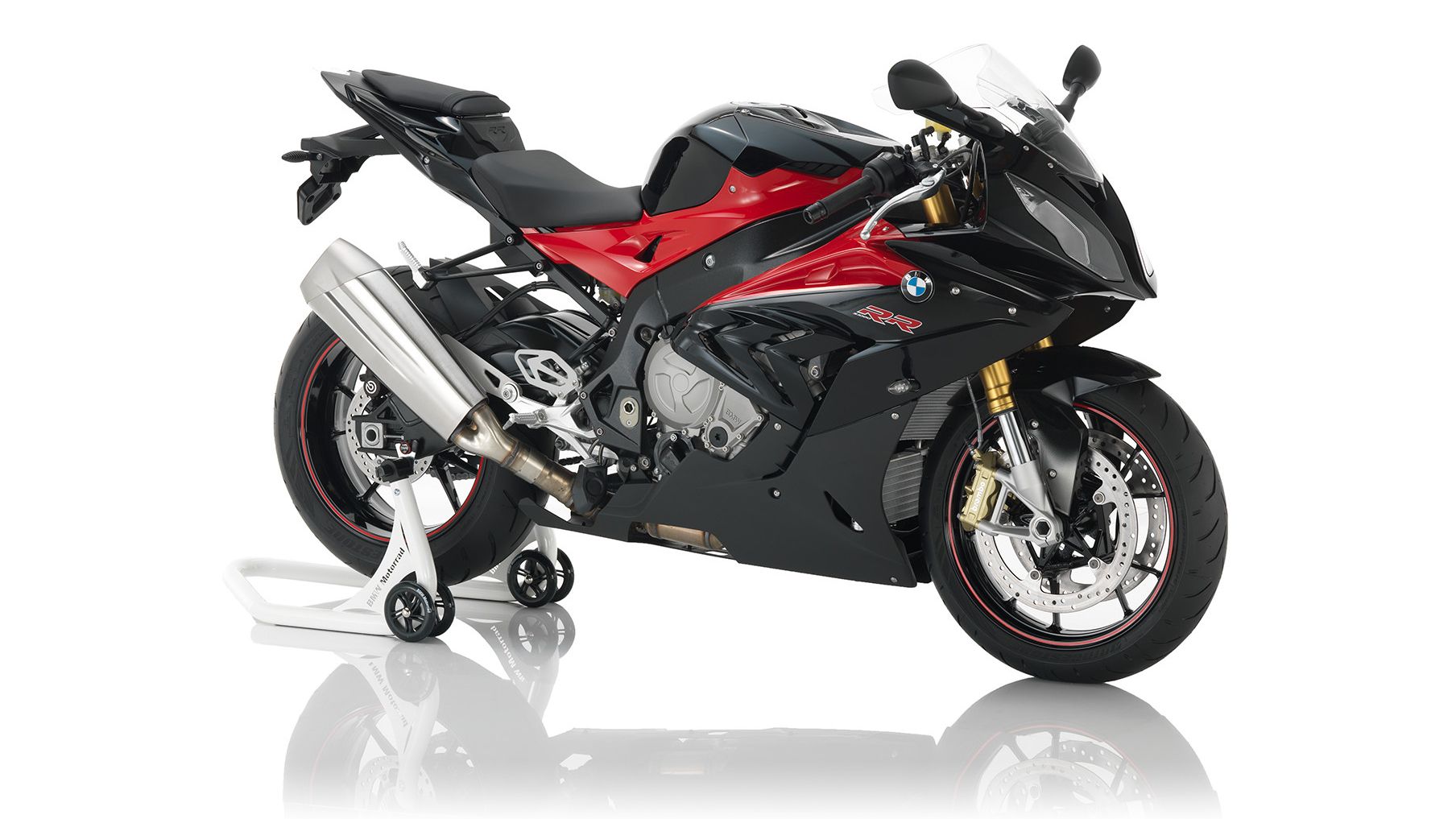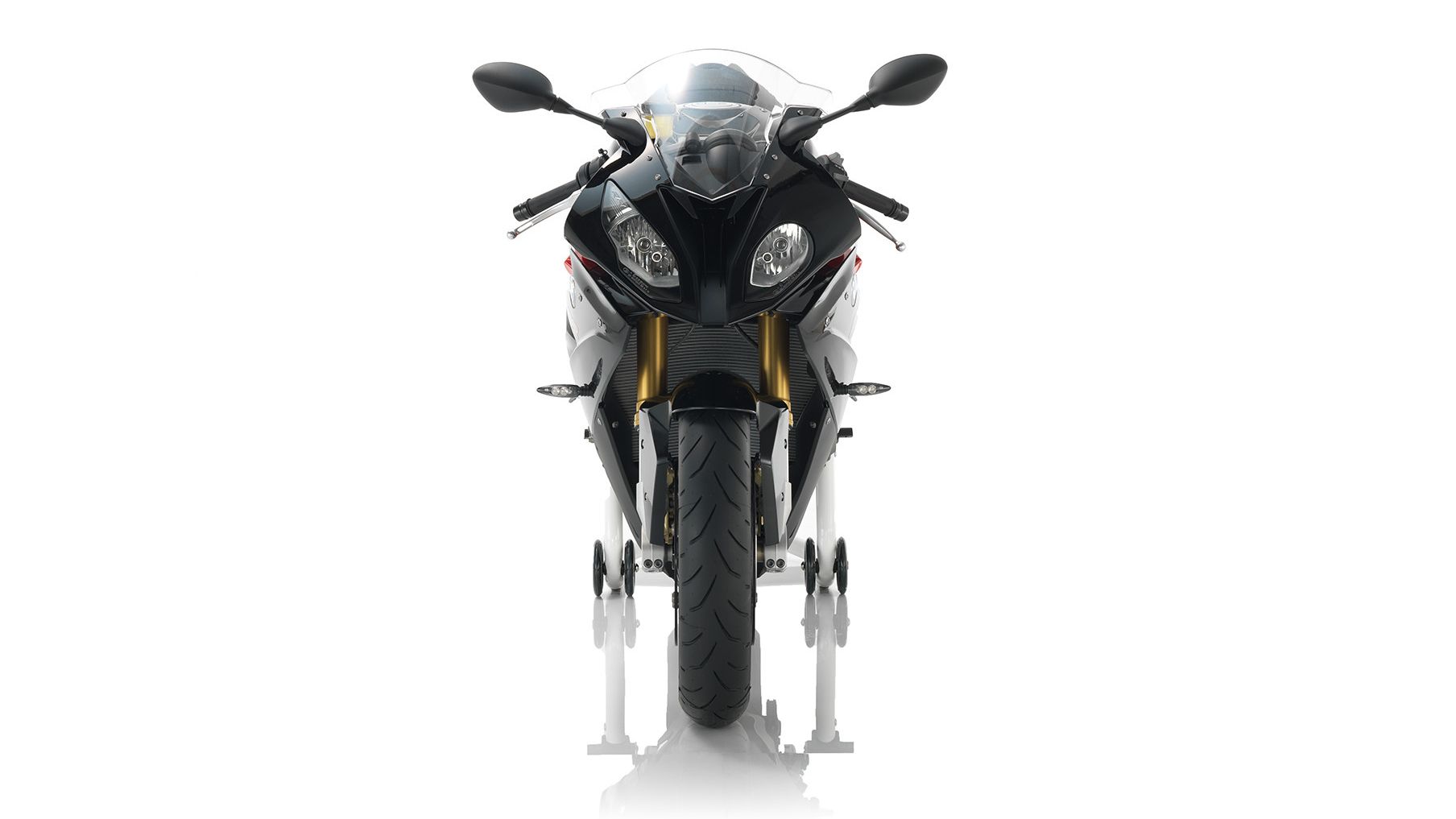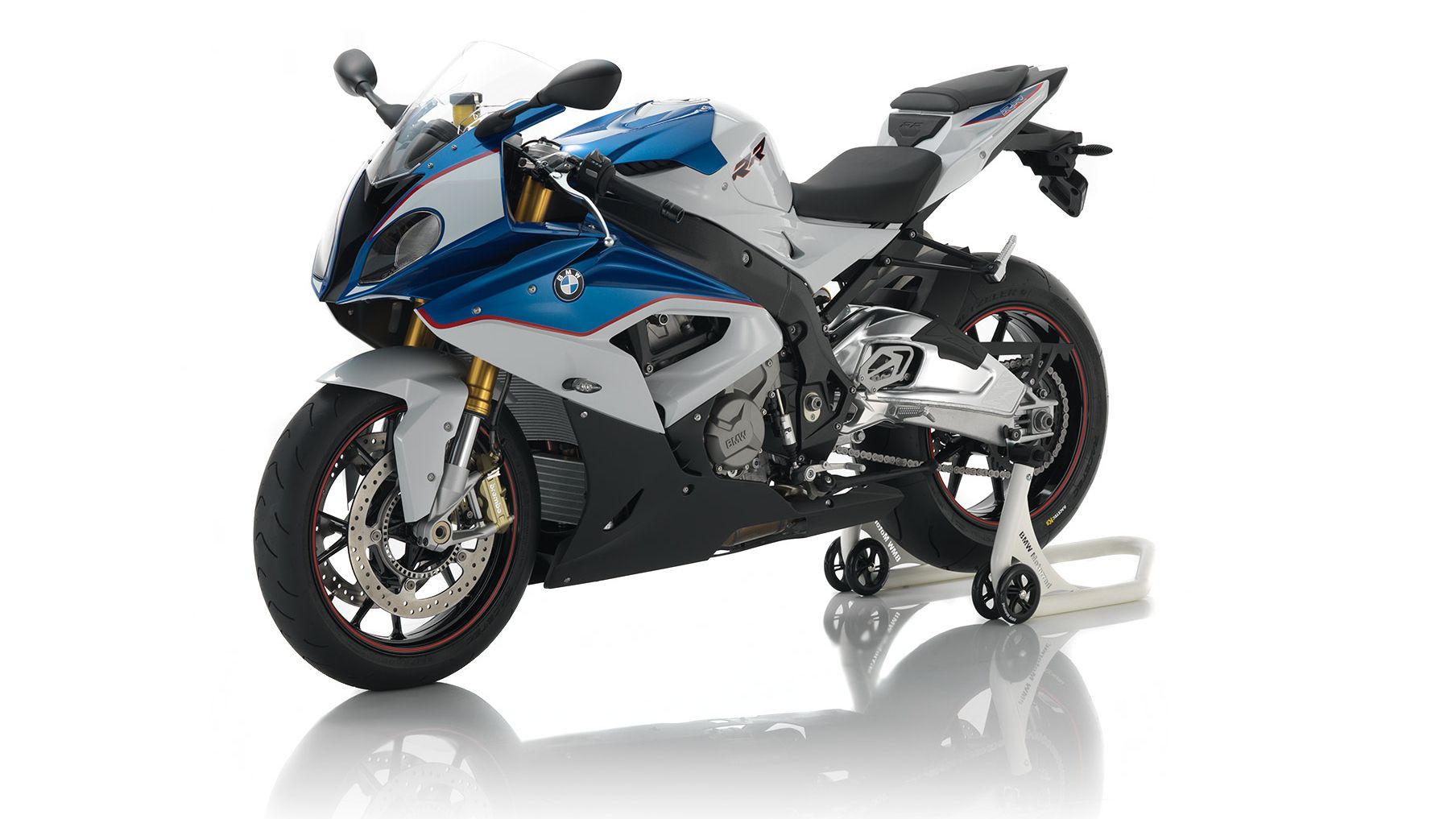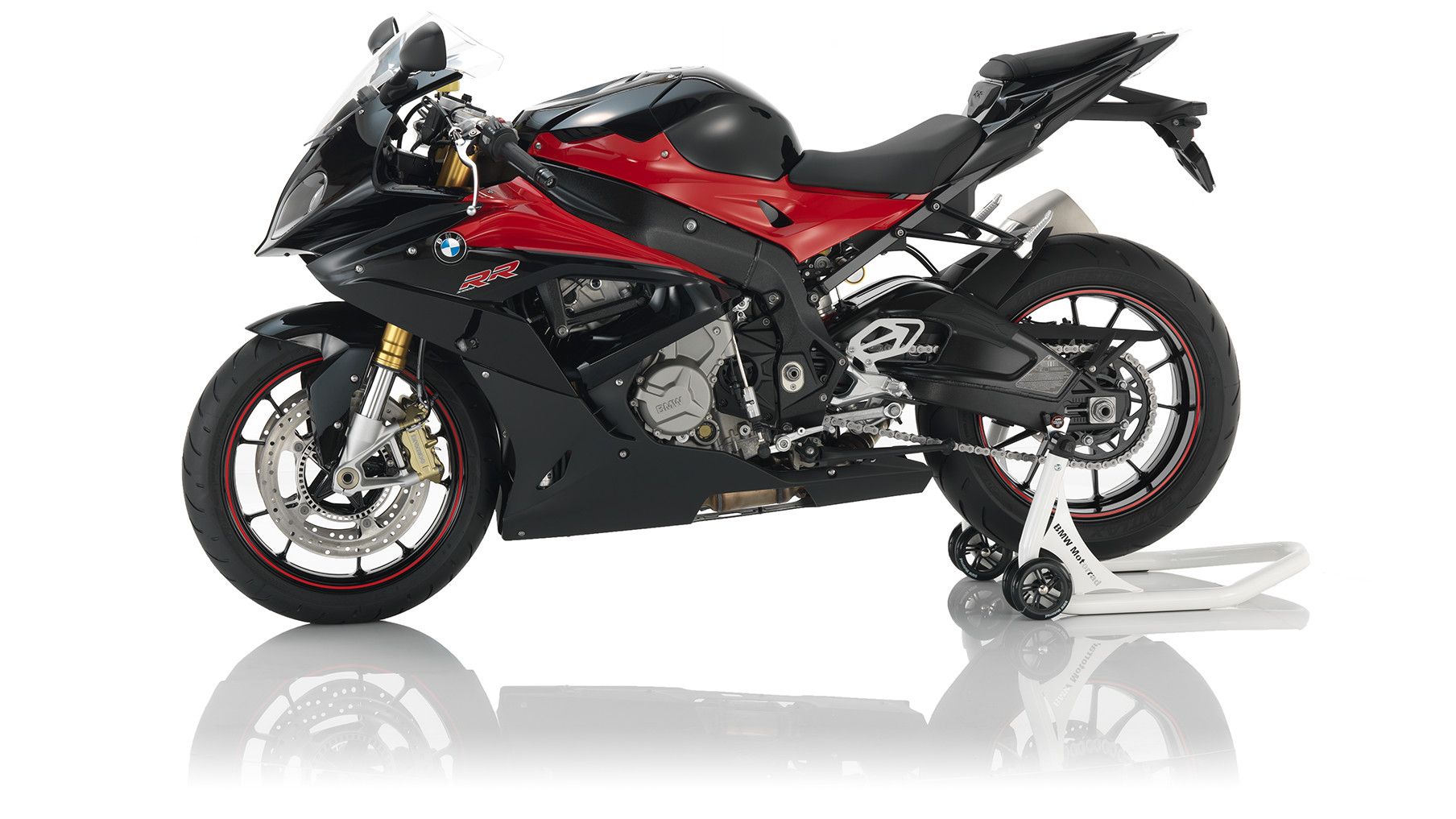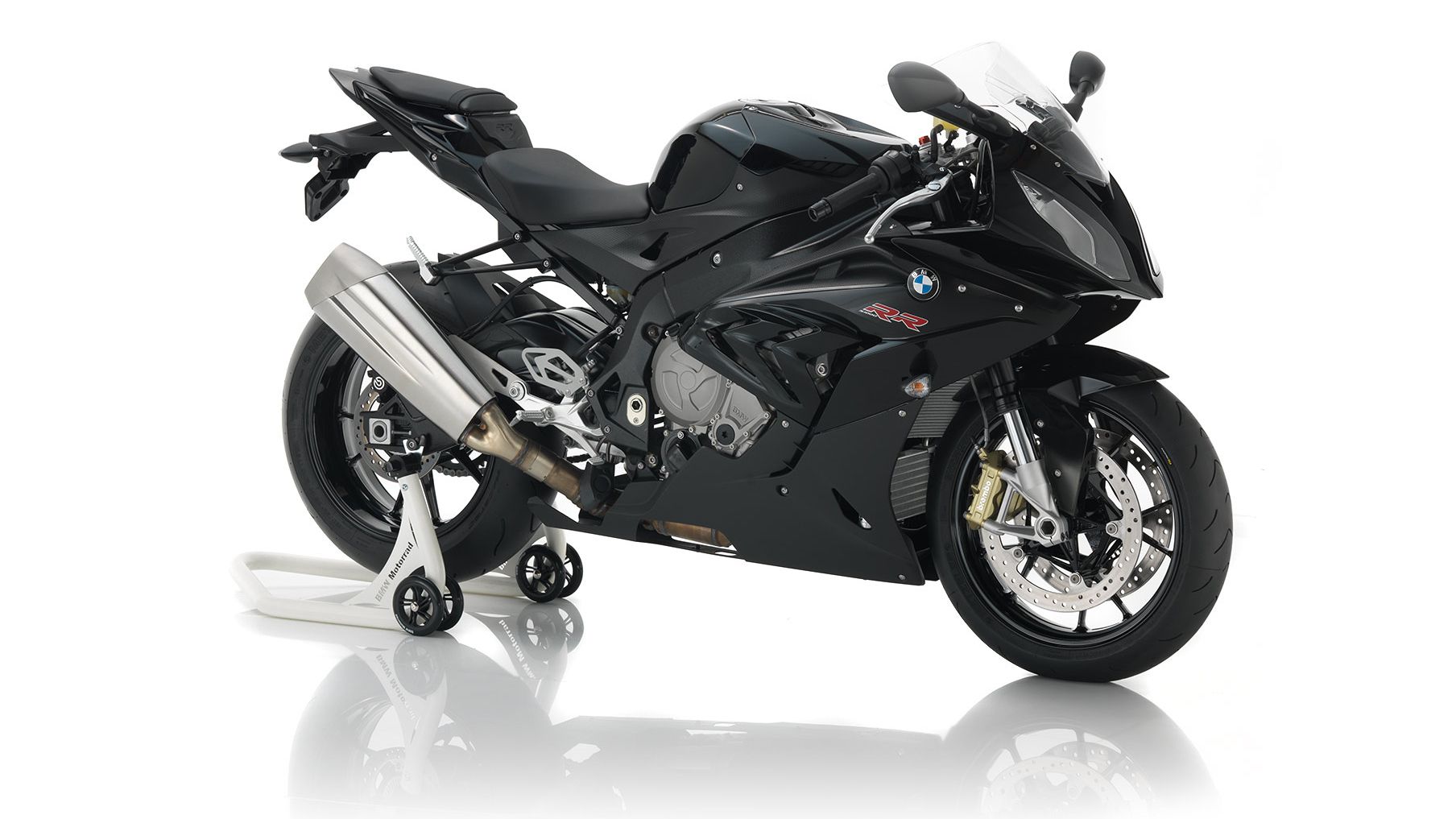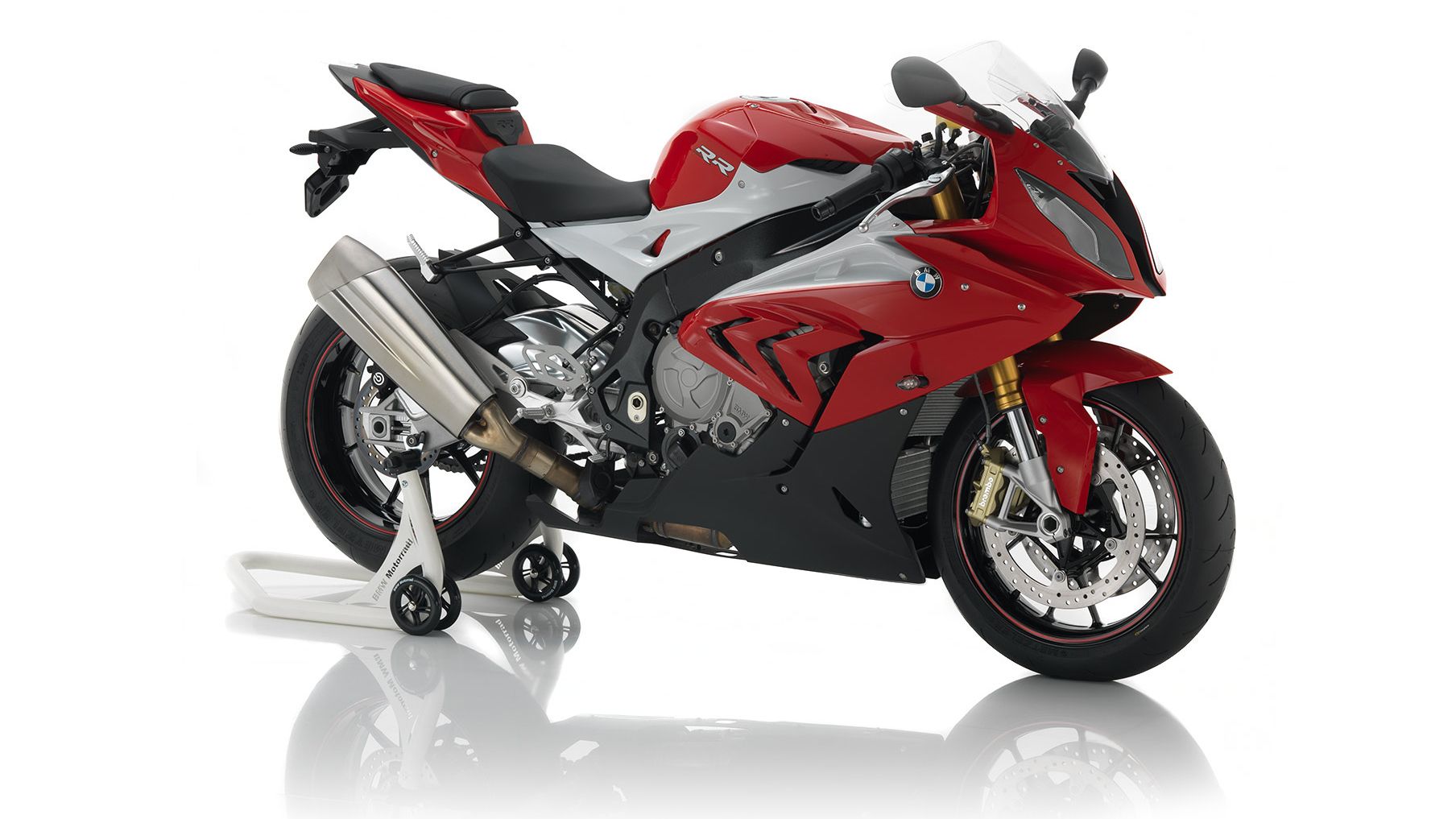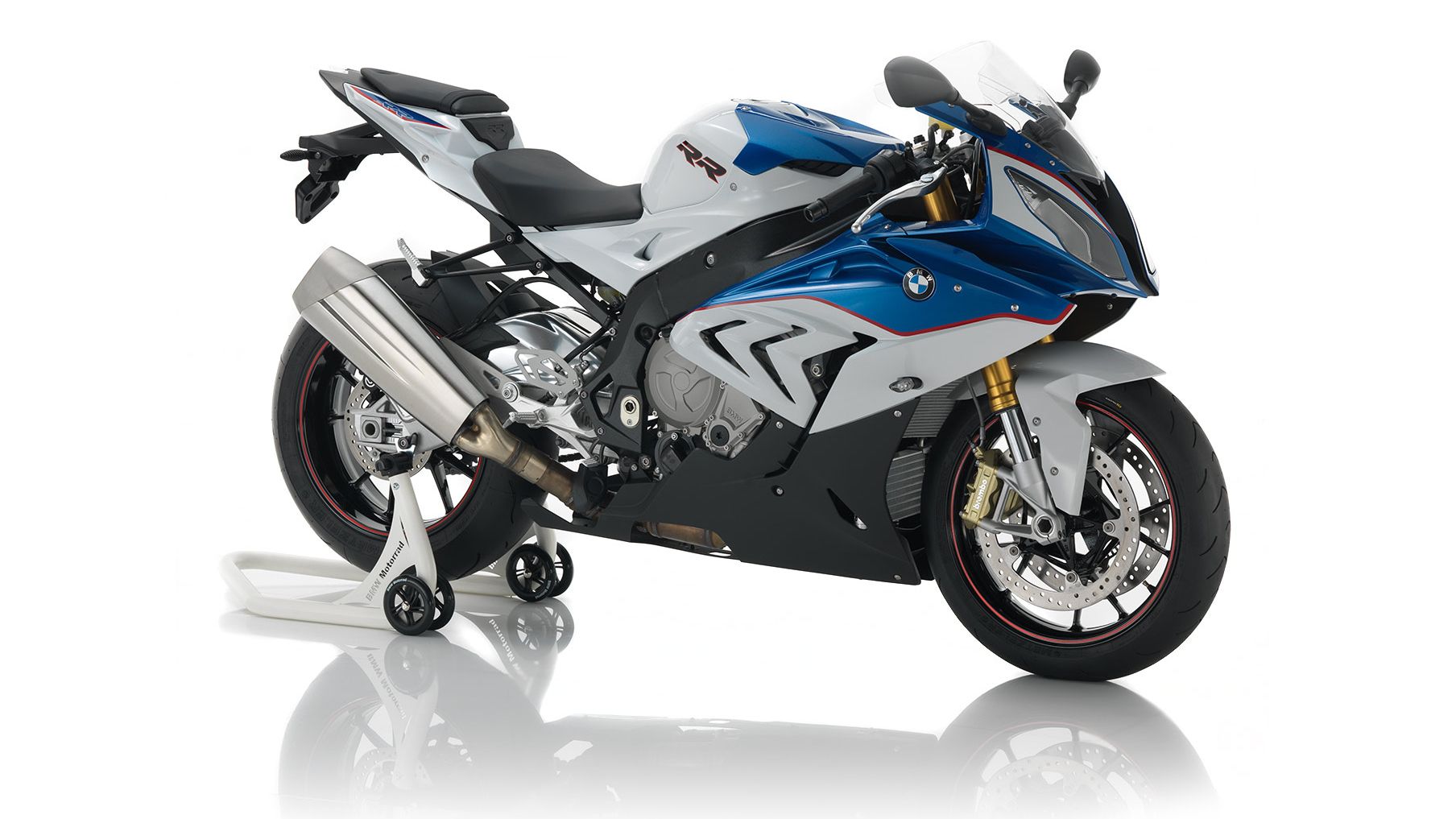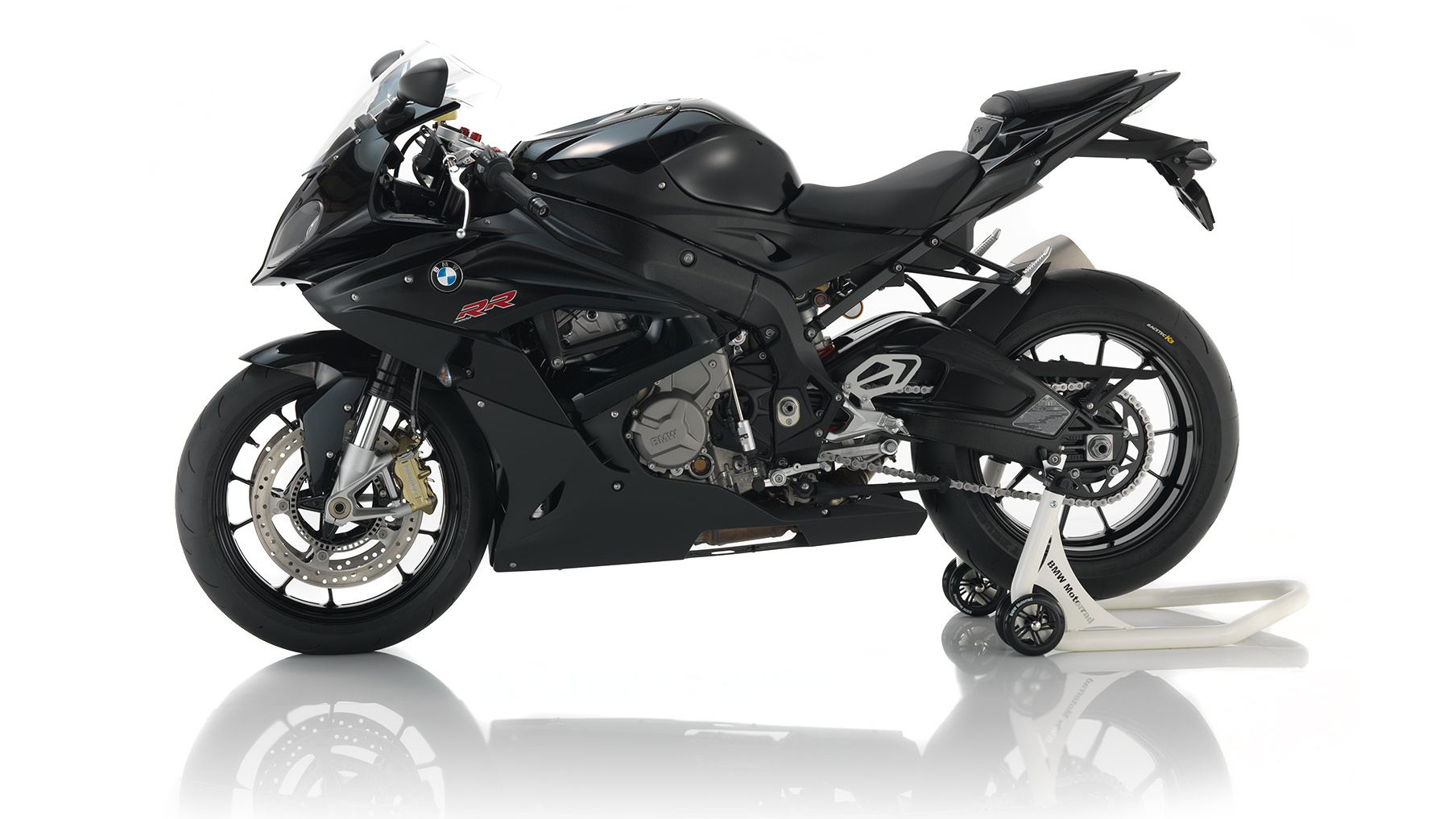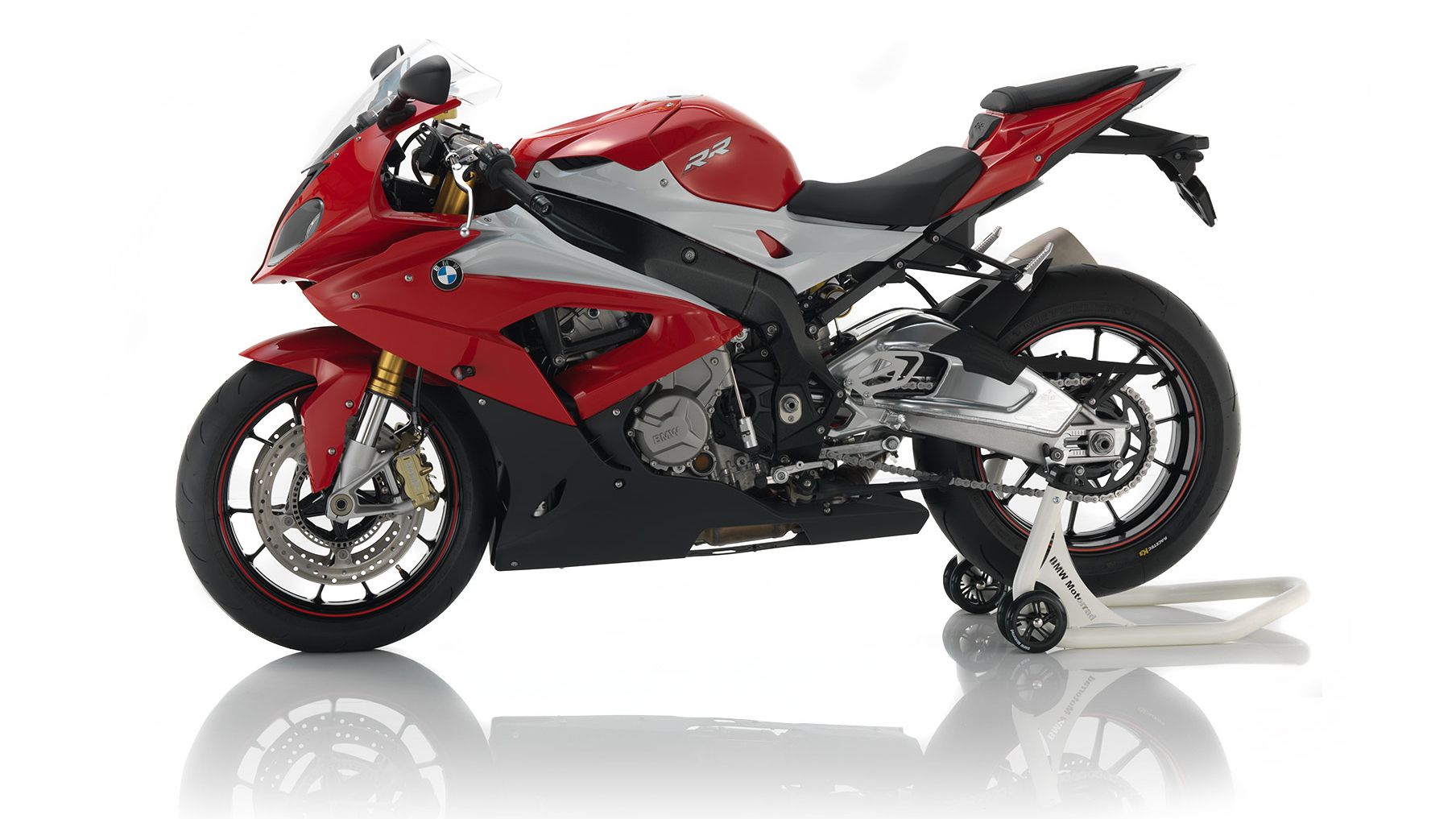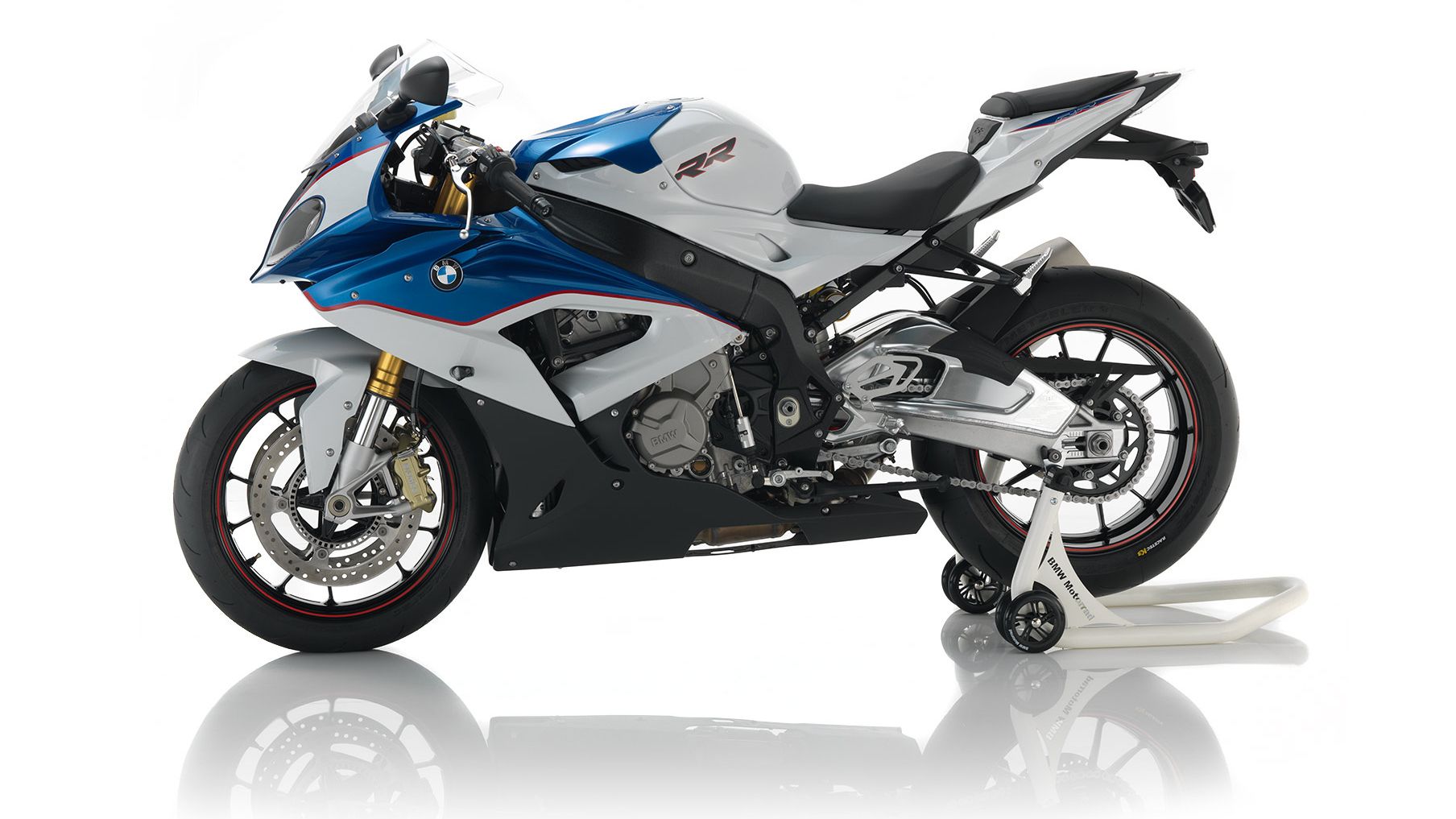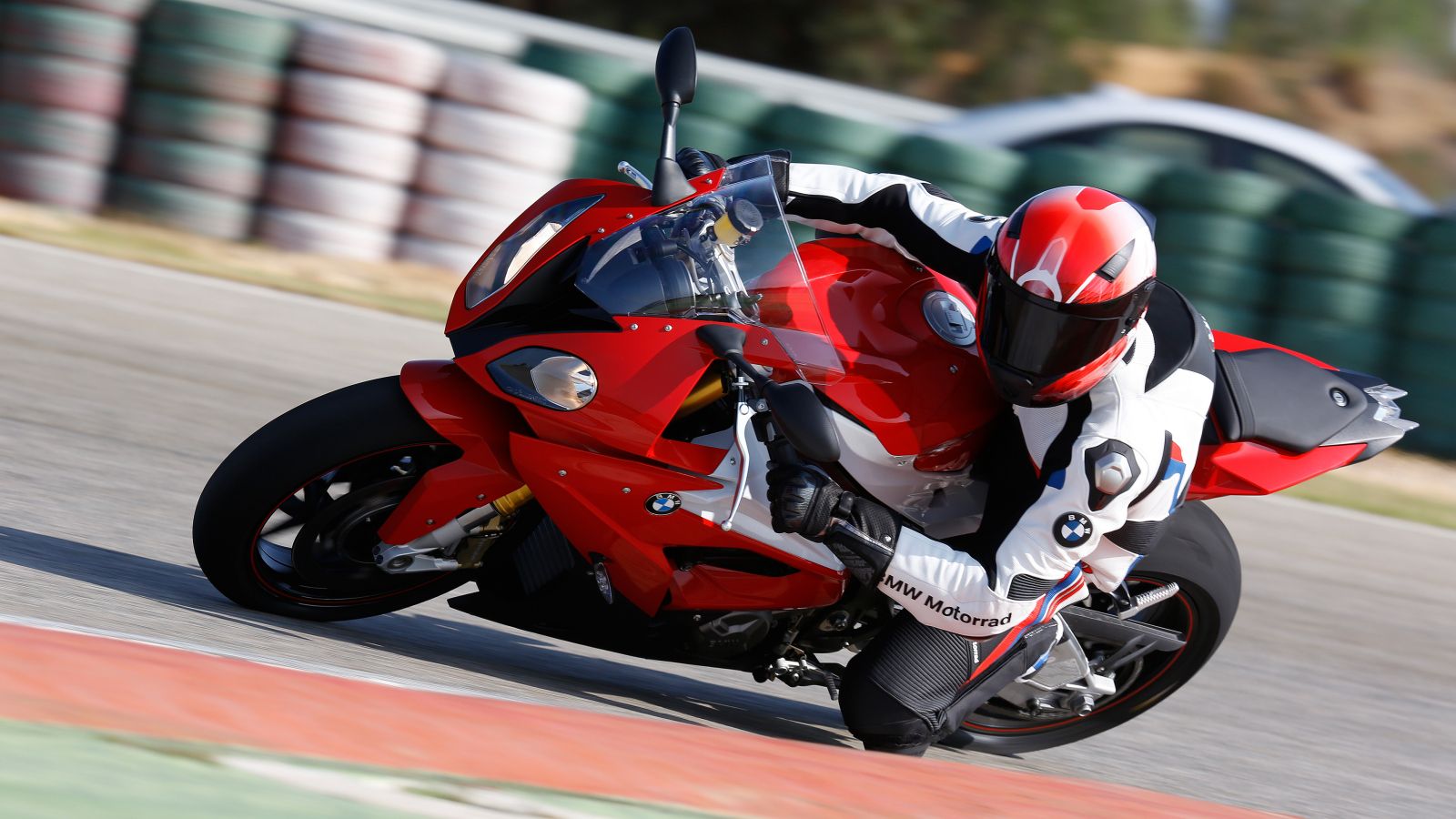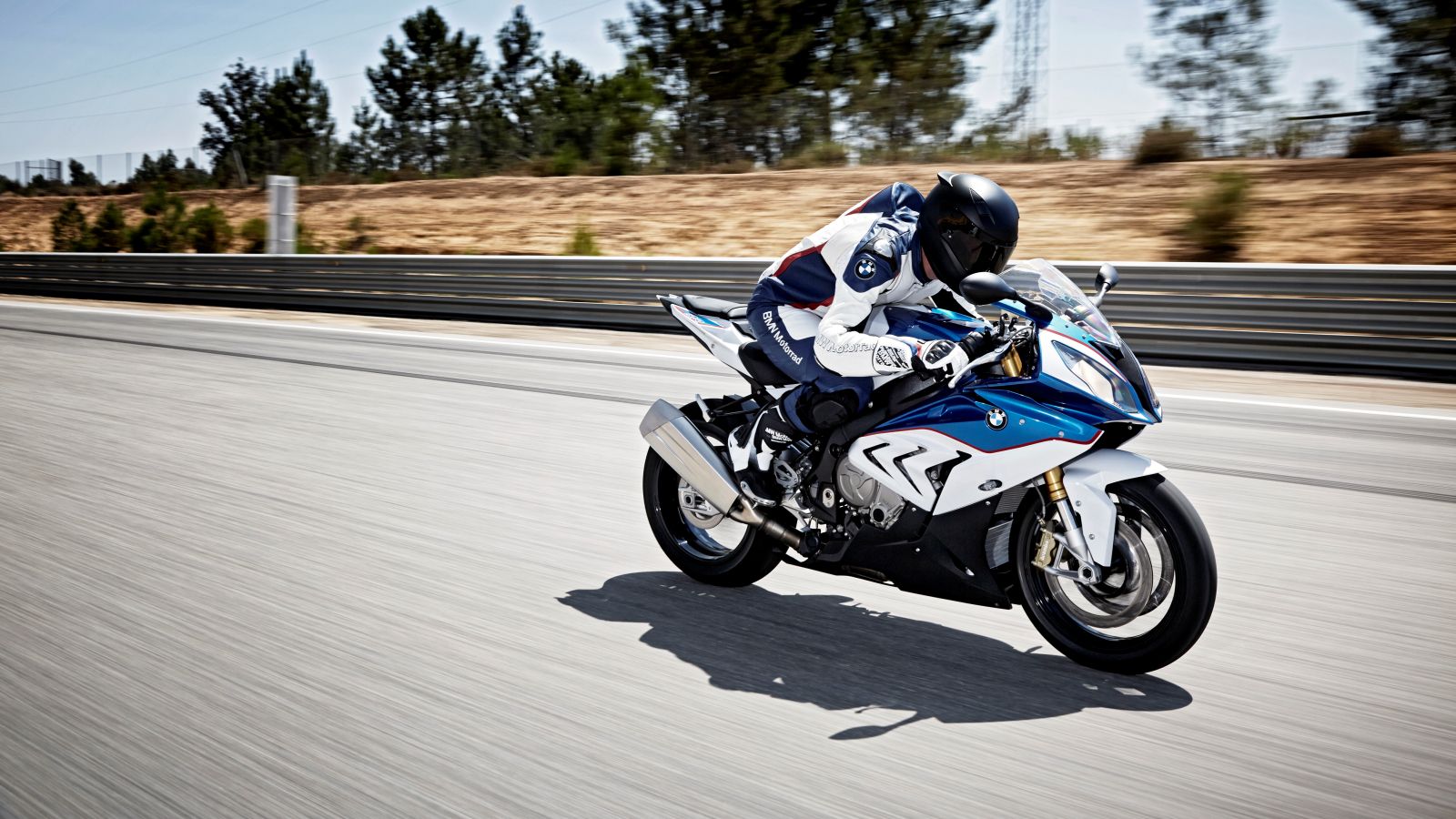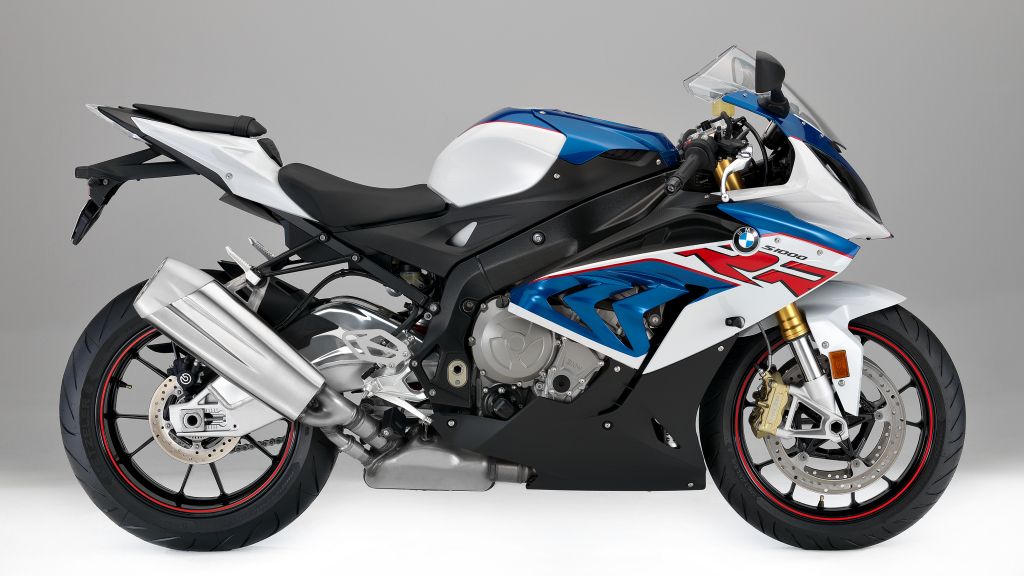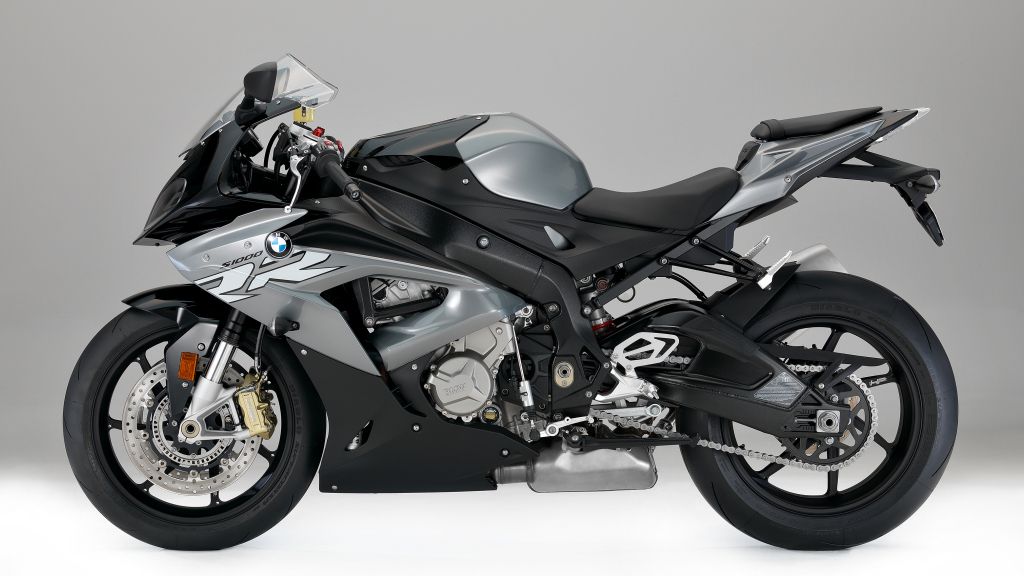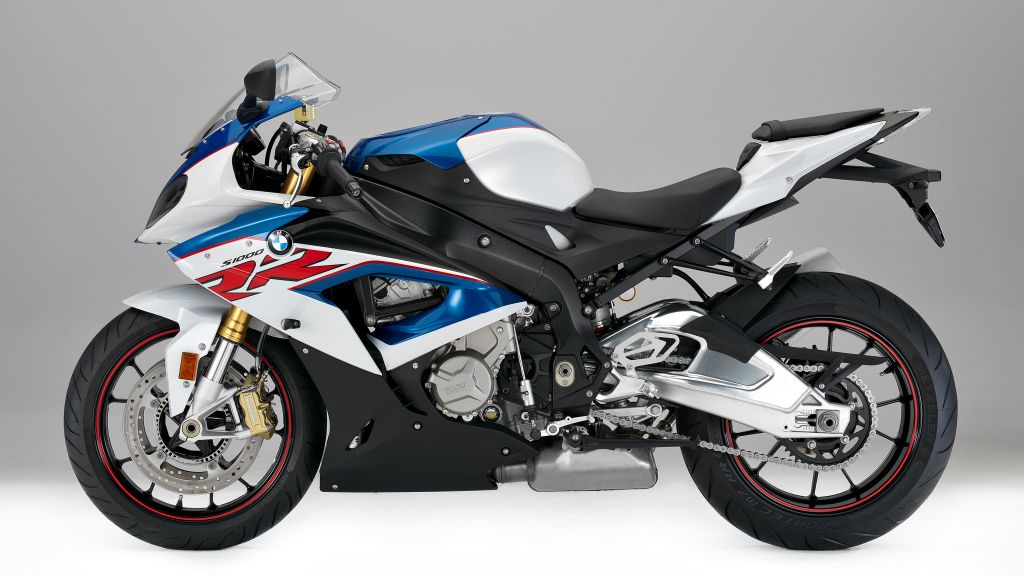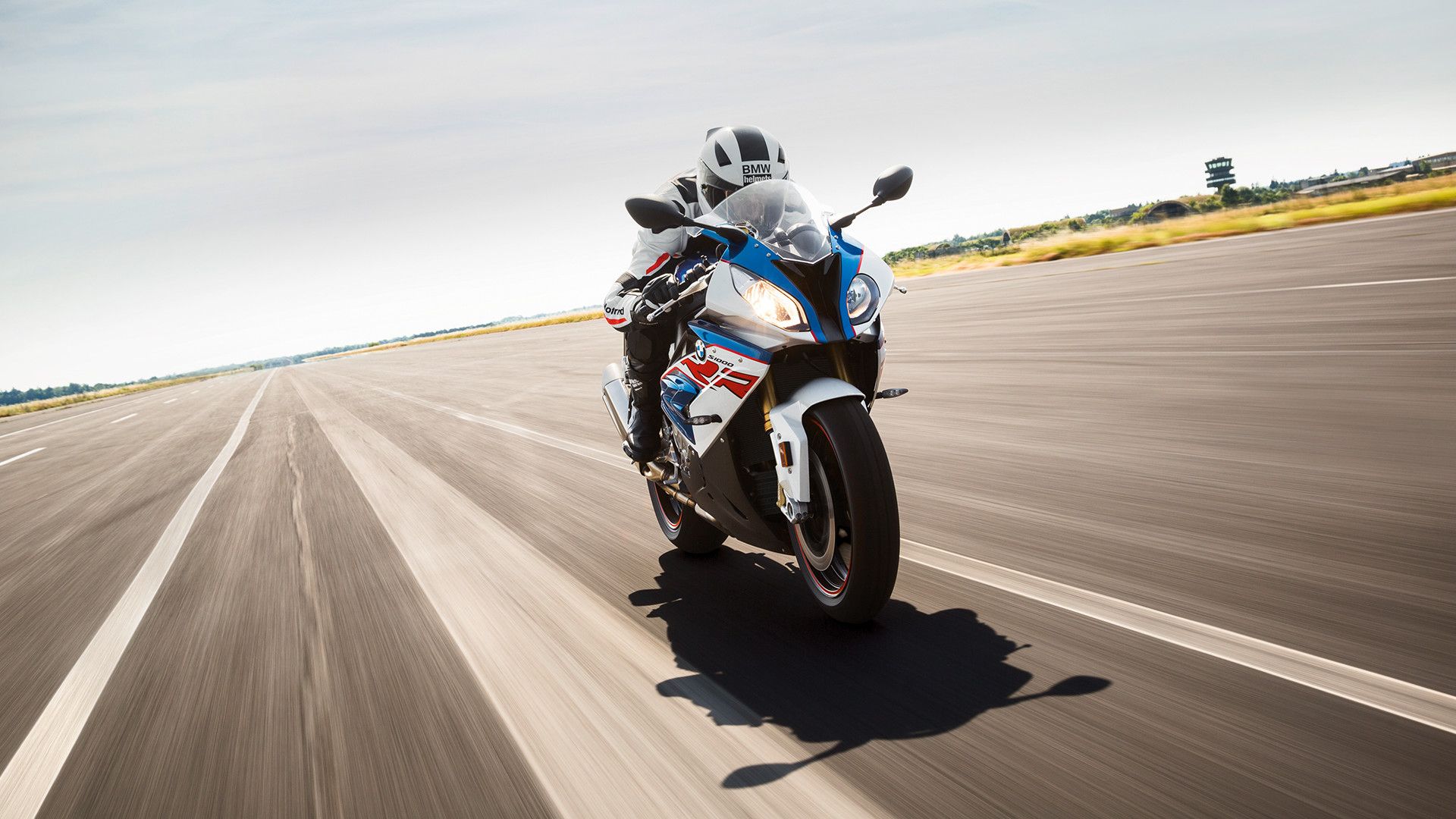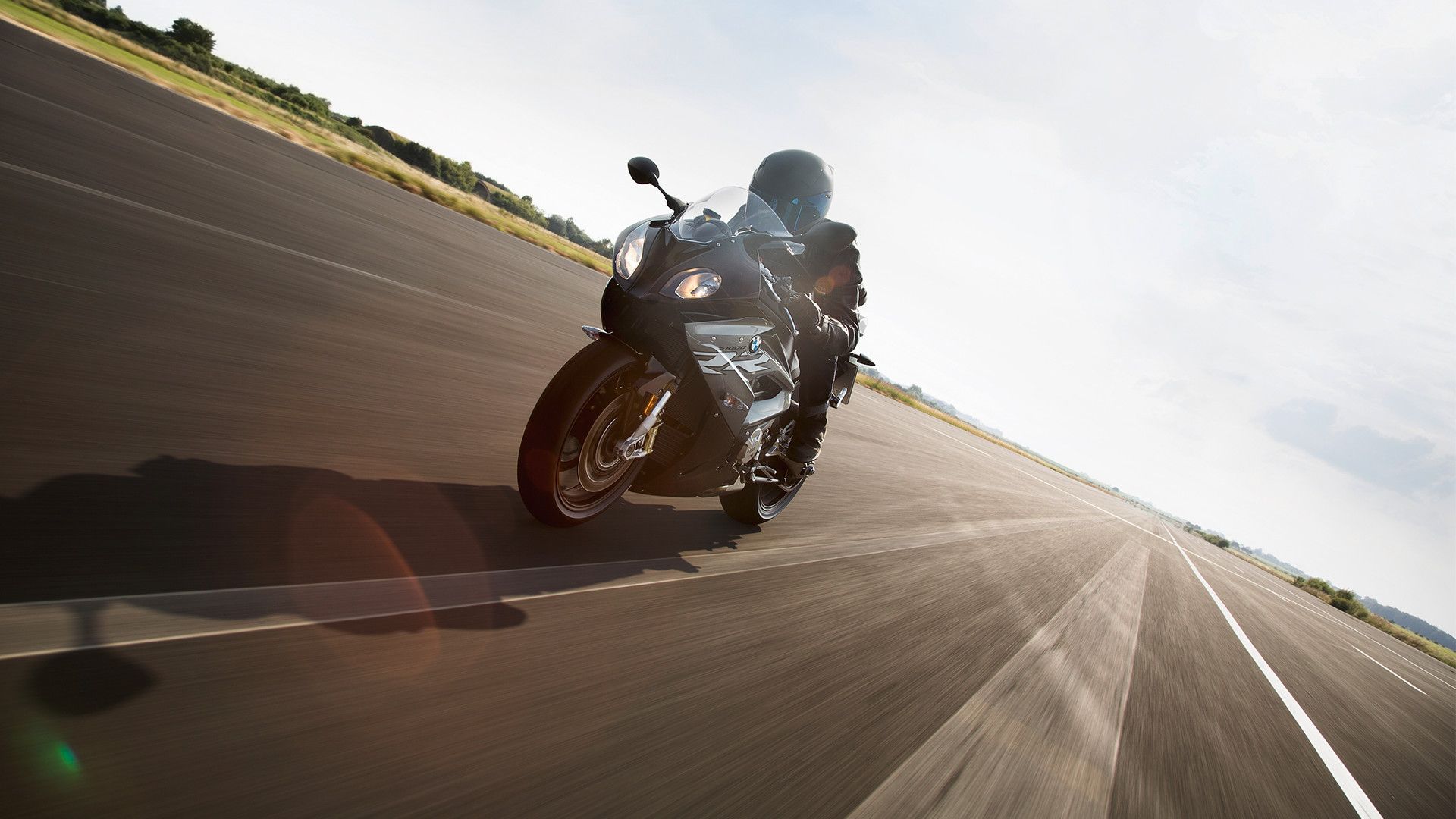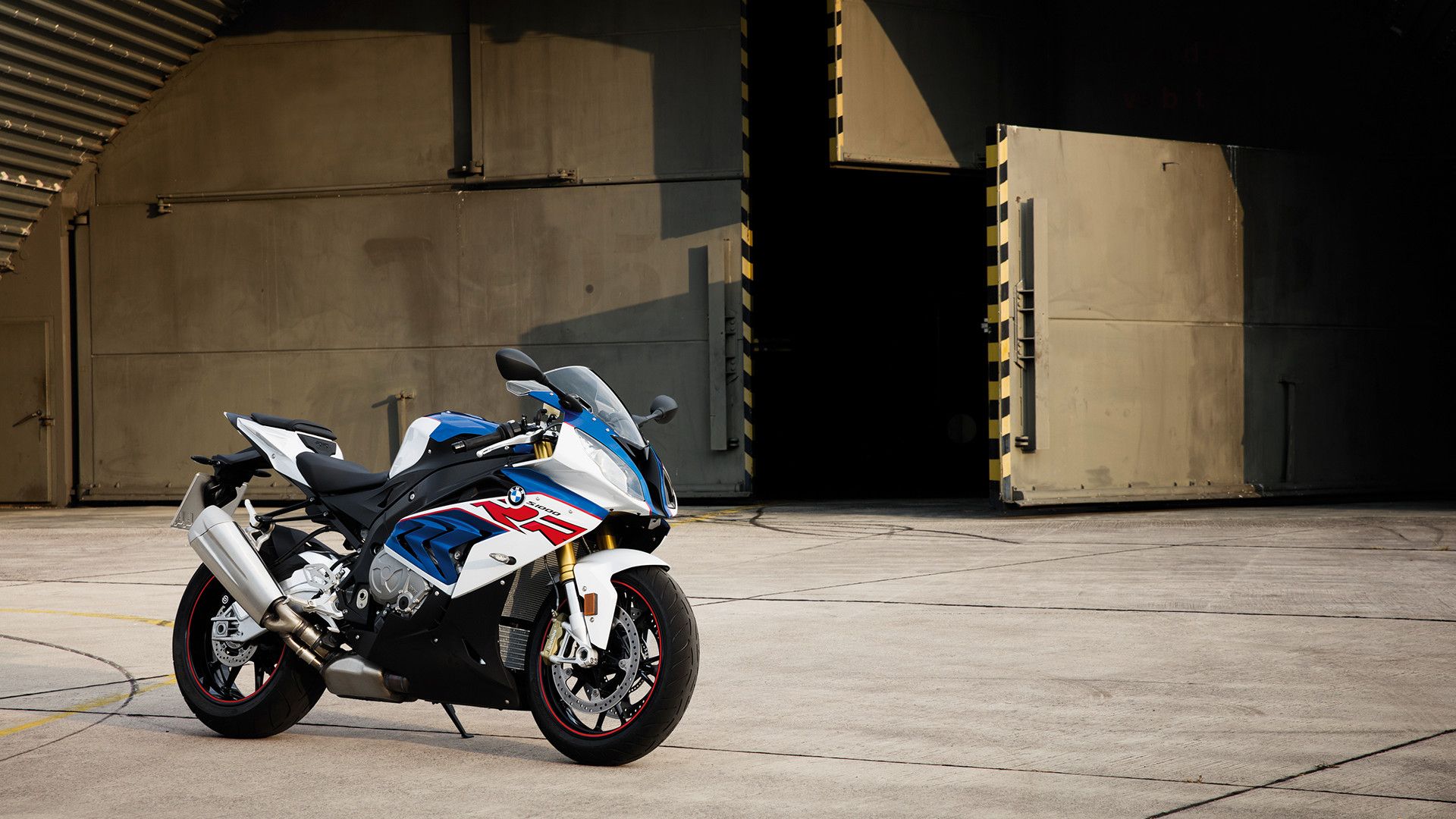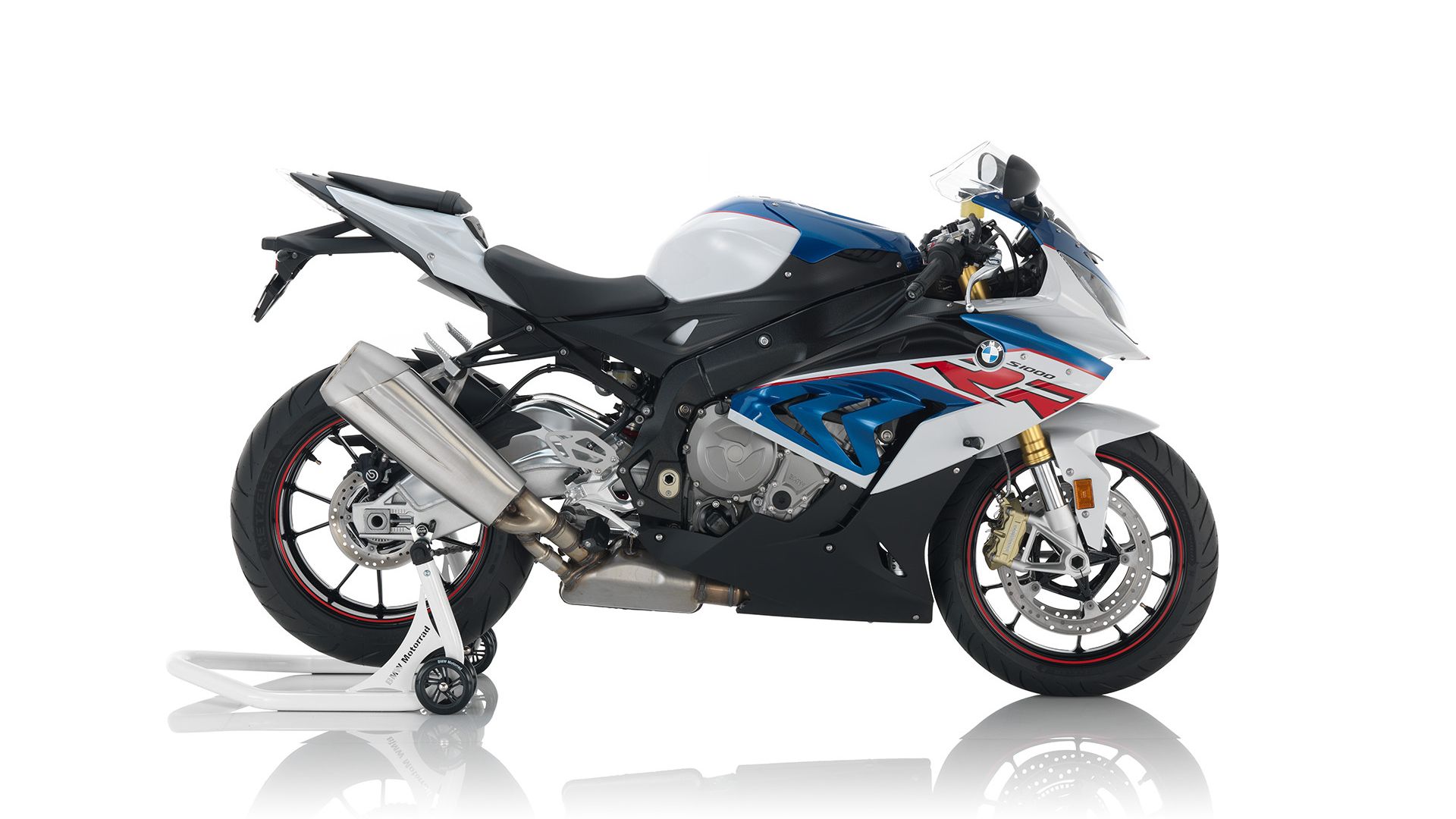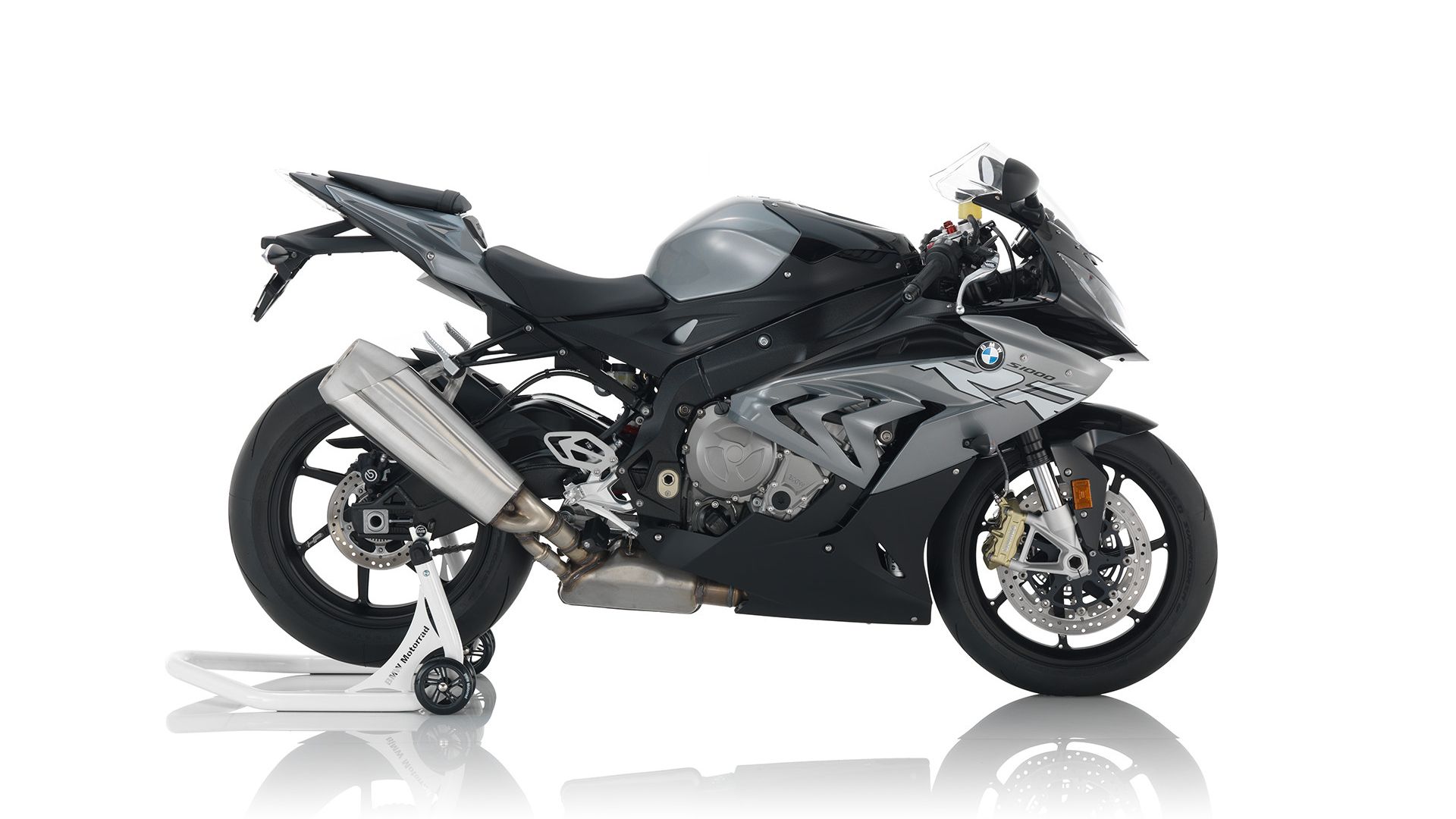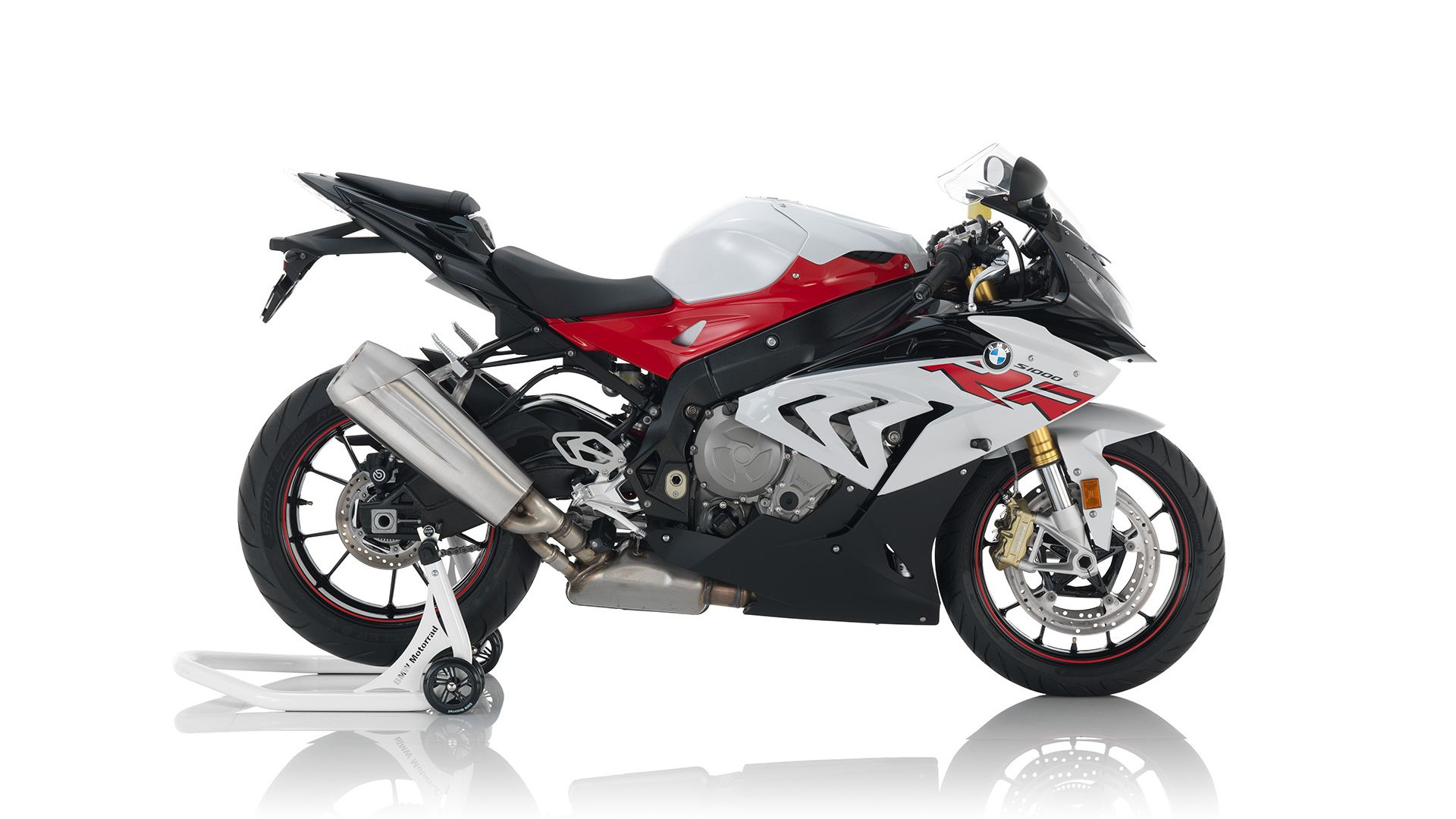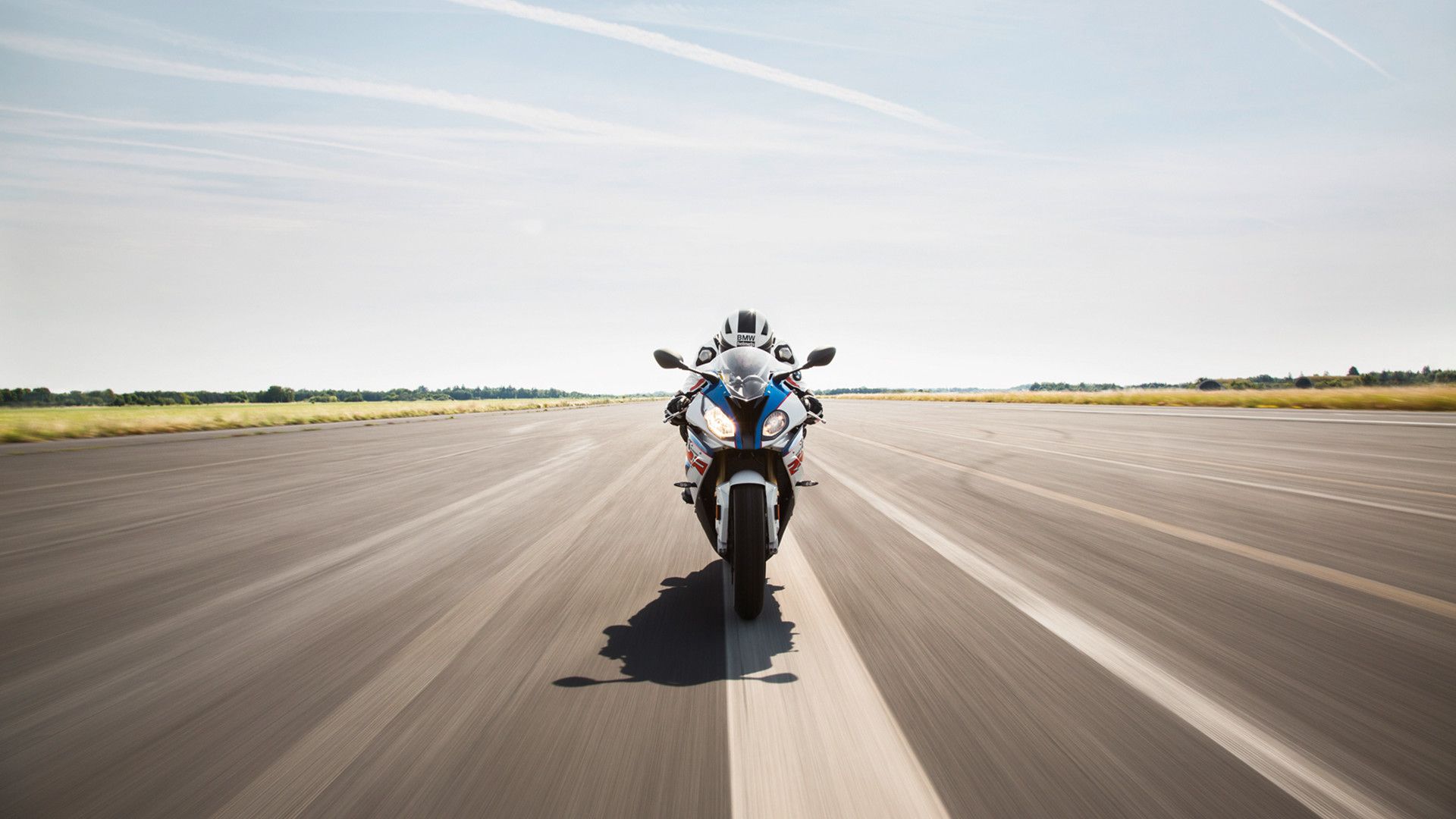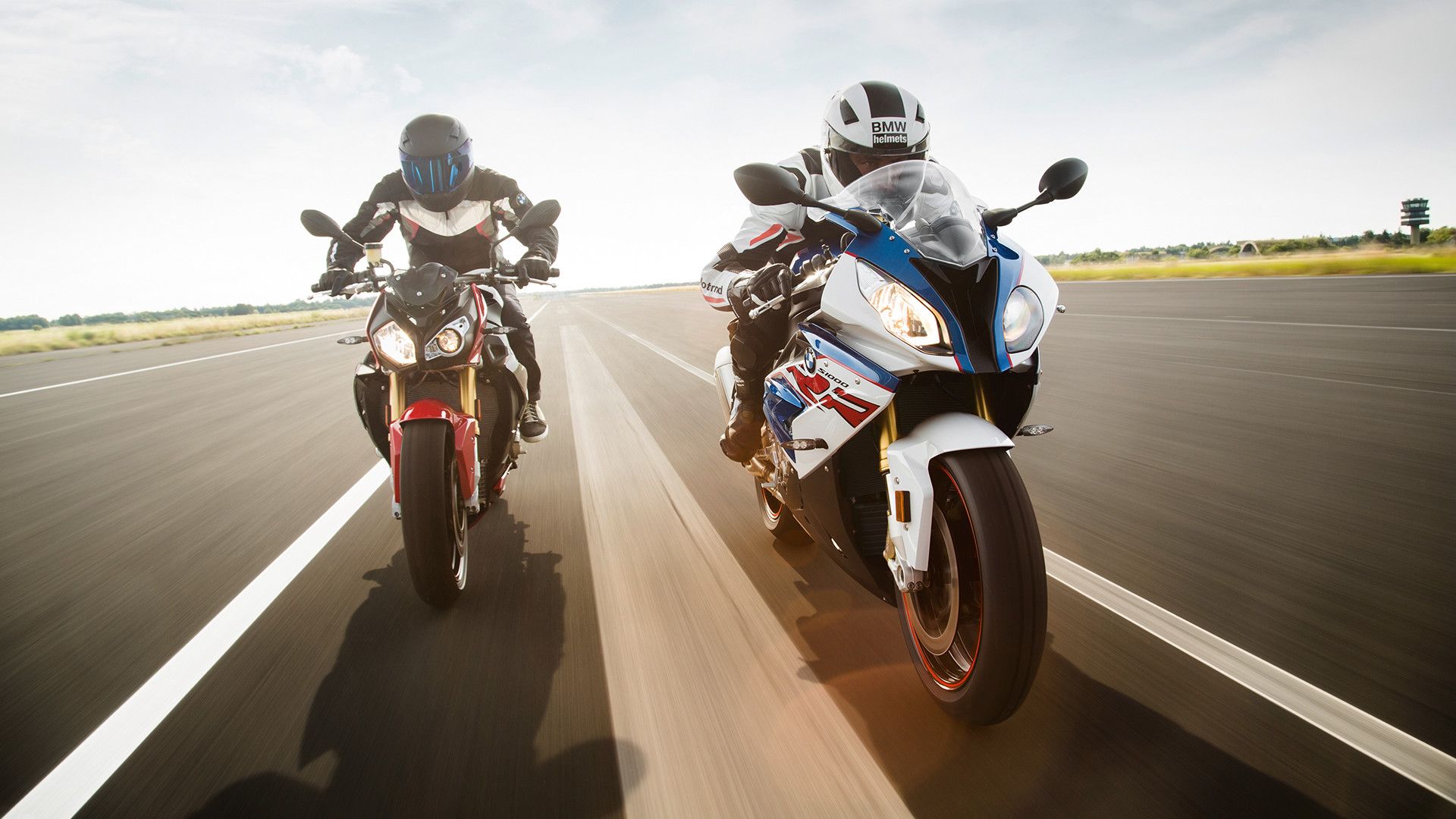BMW has always had a presence in the motorcycle racing world, in fact the word “Beemer” was coined specifically for BMW's race bikes of old, and the factory continues its blitz into the 21st century. The S 1000 RR is already part of that history, and it is marketed as a race bike, though truth to tell, the official factory race bike gets some features you won't see on the street, but that isn't unusual. Moved by a 999 cc engine that delivers nearly 200 hp, the S 1000 RR is nothing to take lightly. Salient point is; this bike is very close to the official race bike, which makes sense considering that it started life as a race bike in '09 that spilled over into production for the general public the following year.
Continue reading for my review of the BMW S 1000 RR.
2015 - 2018 BMW S 1000 RR
- Make: Array
- Model: 2015 - 2018 BMW S 1000 RR
- Segment: Array
- Engine/Motor: Water/oil-cooled 4-cylinder 4-stroke in-line engine, four titanium valves per cylinder, two overhead camshafts
- [do not use] Vehicle Model: Array
Design
The “Double R” has proven popular with the masses, and was BMW's best-selling model for the 2015 model year -- a year that also saw a major overhaul on the previous generation to bring the bike up to date, and if you will pardon the pun, up to speed. Join me while I check out what's new on this gen, and why it has garnered so much attention worldwide.
This new generation Double R follows the same design criteria as its forebears, and though there are differences, they are rather subtle. What isn't so subtle is the aggressive, nose-down/tail-up stance that leaves the RR looking like nothing so much as a runner crouched at the blocks.
A redesigned front fairing/engine cowling features a new, smaller windshield with an enlarged air intake and gill-like heat vents as well as an extension to the lower-rear cowling to increase airflow through the body. If the racing vents aren't your cup o' tea, the factory has two different, fully enclosed, lightweight carbon body panel sets available as special accessories.
The RR retains its “split-face,” asymmetrical headlight arrangement, but reversed the positions so that the low beam is on the right and the high beam on the left. Not a big difference, but one that will leap out at someone familiar with the previous design. The pilot seat and p-pad also received a bit of attention, and the pad can be hidden beneath a cover that enhances the race-bike curb appeal. Last year, the pillion cover was an option, but for 2018, it's standard.
Speaking of coverage, while it can be said that the RR has rather full body panels, they aren't quite as full as one would normally expect on a proper and they allow the engine to peek out and show a little bit of ankle.
Chassis
An aluminum, bridge-type frame carries the engine at a 32-degree angle and uses it as a stressed member to close the loop. The frame underwent a significant revamp for this new generation with a half-degree reduction in the steering head for a shorter 23.5-degree rake and 3.9-inch trail. A 3 mm drop in the swingarm pivot works with the new steering geometry to provide improved feel and feedback to the rider while increasing the traction at the rear tire. A strong-looking, dogleg aluminum swingarm completes the standing chassis, and it adds to the curb appeal while inspiring confidence in its implied strength.
Suspension got a little tweak-u-lation as well. The inverted, 46 mm forks come with the same ten-position adjustment for the compression- and rebound-damping that allows you to dial in for the conditions. Fork length got stretched by 1.7 inches, and a reduction in negative spring travel jacked both ends of the bike up an additional 5 mm for extra cornering clearance. The rear shock also comes with compression and rebound damping, and the compression damping range has been expanded a bit for even more ride-tuning options. Suspension travel measures out at 4.7-inches at the axles on both ends of the bike.
Beemer adapted the Dynamic Damping Control (DDC) from its HP4 for use by the Double R, and offer it as optional equipment. The DDC works in conjunction with the traction control system and uses data concerning lean angle and roll rate along with detailed info from the suspension components themselves to electrically adjust a damping valve to dynamically tune the ride. Baseline suspension performance is automatically set when the rider selects a riding mode, and the system takes it from there. If that isn't good enough, you can further tweak the ride on the fly via push button.
As per homologated superbike rules, the Double R rolls on 17-inch hoops. The bike comes stock with cast rims, but offer forged aluminum rims that weigh in 5.2-pounds lighter than the stock ones. Buyers also get a choice of tires, and can choose from either the Pirelli Diabolo Supercorsa SP or the Conti Race Attack Compound variety.
A pair of four-pot calipers bind the dual, 320 mm front brake discs and a single-pot caliper grabs the 220 mm disc in back. The RR comes with a semi-integral, race ABS system that also provides varying levels of intervention based on the selected rider modes, or it can be turned off altogether. When in “race” mode, a rear-wheel lift detection feature prevents end-overs by feathering the front brake as soon as the rear wheel comes off the ground. All nifty stuff that acts as both enabler and safety net for riders seeking the edge of the performance envelope.
|
Frame: |
Aluminum bridge-type frame with load-bearing engine |
|
Front suspension/Travel: |
Upside-down telescopic fork Ø 46 mm, compression and rebound stage adjustable/4.7 in (120 mm) |
|
Rear suspension/Travel: |
Aluminium 2-sided swing arm, compression and rebound damping adjustable/4.7 in (120 mm) |
|
Castor: |
3.9 in (96.5 mm) |
|
Steering head angle: |
66.5° |
|
Wheels: |
Cast aluminum wheels |
|
Rim, front: |
3.50 x 17" |
|
Rim, rear: |
6.00 x 17" |
|
Tire, front: |
120/70 ZR 17 |
|
Tire, rear: |
190/55 ZR 17 |
|
Brake, front: |
Dual disc brake, floating brake calipers, 4-piston fixed caliper, diameter 320 mm |
|
Brake, rear: |
Single disc brake, single piston floating caliper, diameter 220 mm |
|
ABS: |
BMW Motorrad Race ABS (part-integral, can be switched off) |
Drivetrain
BMW's inline, four-banger mill really puts the super in this superbike. Massively oversquare, this motor runs an 80 mm bore and 49.7 mm stroke, so naturally torque is relatively mild with 83 pound-feet at 10,500 rpm and horsepower is through the roof with 199 ponies at 13,500 rpm, six horsepower more than the previous gen. You read that right folks, that's pretty much 200 horsepower from a one-liter (999 cc) engine, and a claimed top speed of over 125 mph (How much over, can't say).
Dual over-head cams actuate four valves in each combustion chamber, and compression on the production model is fairly high at 13-to-1. (Tidbit of trivia: the race-team bike runs even hotter at a whopping 14-to-1.) As with the chassis, the engine comes with various features to help the rider control and harness all that power. The electronic wizardry starts at the right wrist with Beemer's “E-gas” ride-by-wire feature that enables the other systems. First up is the servomotor-controlled, variable-length intake tract that uses a long intake at lower rpm and shifts to a shorter intake pipe when engine revs get up over 11.5 K to allow the engine to crank out those last few ponies.
Next we have the standard “riding modes” that offer three distinct presets for different conditions, as well as the optional Ride Modes Pro that brings even more performance presets to the table, and works with the Dynamic Traction Control (DTC), ABS and DDC to provide all-in-one electronic oversight. The Race Modes Pro also comes with a Launch Control feature and pit-lane speed limiter, both of which will be desirable if you plan on competing in official, race-circuit events.
A six-speed, constant-mesh transmixxer manages the ratios with a hydraulically-assisted “slipper” clutch that makes for a light pull at the lever and prevents wheel hop on hard downshifts. The optional Gear Shift Assist Pro gives the rider the ability to shift both up and down the range sans clutch for the fastest shifts short of an automatic for the final, race-tastic touch.
|
Engine: |
Water/oil-cooled 4-cylinder 4-stroke in-line engine, four valves per cylinder, two overhead camshafts, wet sump lubrication |
|
Bore x stroke: |
80 mm x 49.7 mm |
|
Capacity: |
999 cc |
|
Rated output: |
199 hp (146 kW) at 13,500 rpm |
|
Max. torque: |
83 lb-ft (113 Nm) at 10,500 rpm |
|
Compression ratio: |
13.0:1 |
|
Clutch: |
Multiplate clutch, mechanically controlled |
|
Gearbox: |
Constant-mesh 6-speed gearbox, straight-cut gears |
|
Drive: |
Chain 2.647:1 |
Price
This bike represents an incredible package between the performance, rider augmentations and bonafide racing credentials all bundled together, and so the 2018 price tag is something of a pleasant surprise at only $15,995 with ABS and DCT as standard equipment. Not only does this price make the bike accessible to would-be and wannabe racers, but it really puts the pressure on its competition in the market as well as the track.
|
Colors: |
|
|
2015: |
Black Storm Metallic, Racing Red/Light White, Light White, Lupin Blue Metallic/Racing Red |
|
2016: |
Black Storm Metallic/Racing Red, Black Storm Metallic, Racing Red/Light White, Light White, Lupin Blue Metallic/Racing Red |
|
2017: |
Racing Red / Light White and Light White/Lupin Blue Metallic/Racing Red |
|
2018: |
Granite Grey Metallic / Black Storm Metallic, Light White / Lupin Blue Metallic / Racing Red, Racing Red / Light White |
|
Price: |
|
|
2016, 2017: |
$15,695 |
|
2018: |
$15,995 |
Competitor
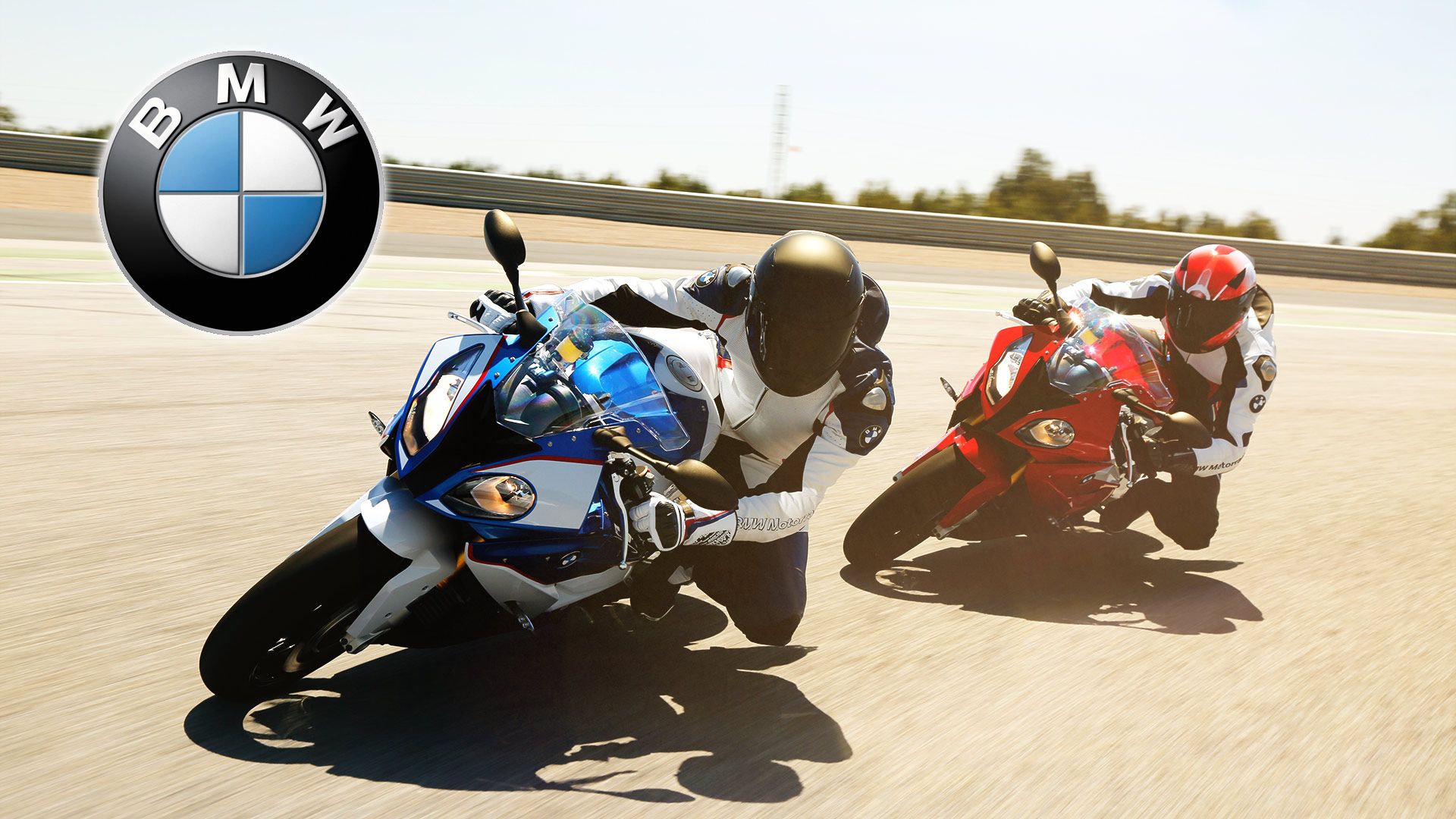
|
right> |
Although the Double R has the capacity for actual track use, especially with the optional racing packages, the truth is most units will never get closer to a closed-circuit than the parking lot. No doubt there are many riders that appreciate race technology, even if they only use it on the streets, so I decided to go with a bike that fills the same niche; the Brutale 1090 RR from MV Agusta.
Visually, the two follow the same tail-high stance, but the Beemer carries a deeper dip at the front end that accentuates the look a bit. Although it definitely qualifies as a superbike, the Brutale sheds enough paneling to expose the Trellis frame and the engine while the S 1000 RR carries a little more body cladding, leaving a little bit to the imagination. In the end, both are performance- and function-driven machines, and a glance is all it takes to determine that these are by no means “poser” bikes.
Both run inline, liquid-cooled, four-cylinder engines that feature ride-by-wire throttles and traction control, but Beemer comes out on top of the engine-gagdetry category with its optional Pro features. MV Agusta boasts the most displacement at 1,078 cc, a skosh larger than the 999 cc Beemer mill, but that doesn't tell the whole story. While the Brutale cranks out an undeniably powerful 158 horsepower and 73.7 pound-feet of torque, its still outmatched by the 199 horsepower and 83 pounds of grunt from the smaller-displacement, S 1000 RR motor.
BMW picks up a win with its chassis gear as well. The Brutale comes with adjustable suspension much like the stock S 1000 RR, but doesn't have the optional dynamic suspension tuning feature, and doesn't benefit from an angle-sensing ABS. The Brutale ABS isn't completely vanilla though, it does come with a rear-wheel lift-up mitigation feature similar to the Beemer.
So far, BMW is beating the hell out of the Brutale, and that drubbing continues all the way to the checkout counter. MV Agusta keeps the Brutale 1090 RR below 20 k, barely, at $19,298, which to be fair, is a lot of bike for the buck. The $15,995 sticker on the S 1000 RR places it well below that mark, and to mine eyes, represents even more bike for even less bucks.
He Said
“Wow, the Bavarians never seem to disappoint, and they certainly didn't this time either. This is one heck of a ride, and I'll be the first to admit I probably don't have the skillset necessary to ride it across a parking lot. The rider modes should tame the beast to a certain extent, but I do not recommend this bike for anyone without a few years/thousand miles experience with large-displacement sportbikes. For the rest of you, this ride should be more fun than a barrel of monkeys.”
She Said
My wife and fellow motorcycle writer, Allyn Hinton, says, “For aspiring racers; BMW beefed up its Rider Support and Contingency programs in 2016, and earmarked more than a million bucks for racers that want to pilot a '15 or '16 S 1000 RR in an official race series. That was a pot-sweetener for race-bike pilots already invested in an RR as well as ones shopping for a brand.”
Specifications
|
Engine & Drivetrain: |
|
|
Engine Type: |
Water/oil-cooled 4-cylinder 4-stroke in-line engine, four valves per cylinder, two overhead camshafts, wet sump lubrication |
|
Bore x stroke: |
80 mm x 49.7 mm |
|
Capacity: |
999 cc |
|
Rated output: |
199 hp (146 kW) at 13,500 rpm |
|
Max. torque: |
83 lb-ft (113 Nm) at 10,500 rpm |
|
Compression ratio: |
13.0:1 |
|
Mixture control / engine management: |
Electronic fuel injection with ride-by-wire throttle system and knock sensor |
|
Emission control: |
Closed-loop 3-way catalytic converters, EU-3 norm with electronically controlled interference pipe |
|
Maximum speed: |
over 125 mph |
|
Fuel consumption per 100 km at constant 90 km/h: |
41 mpg at a constant 55 mph |
|
Fuel type: |
Premium Unleaded |
|
Alternator: |
Three-phase 350 W generator |
|
Battery: |
12 V / 7 Ah, maintenance-free |
|
Clutch: |
Multiplate clutch, mechanically controlled |
|
Gearbox: |
Constant-mesh 6-speed gearbox, straight-cut gears |
|
Drive: |
Chain 2.647:1 |
|
Chassis/Brakes: |
|
|
Frame: |
Aluminum bridge-type frame with load-bearing engine |
|
Front wheel location / suspension: |
Upside-down telescopic fork Ø 46 mm, compression and rebound stage adjustable |
|
Rear wheel location / suspension: |
Aluminium 2-sided swing arm, compression and rebound damping adjustable |
|
Suspension travel front / rear: |
4.7 in / 4.7 in (120 mm / 120 mm) |
|
Castor: |
3.9 in (96.5 mm) |
|
Steering head angle: |
66.5° |
|
Wheels: |
Cast aluminum wheels |
|
Rim, front: |
3.50 x 17" |
|
Rim, rear: |
6.00 x 17" |
|
Tyres, front: |
120/70 ZR 17 |
|
Tyres, rear: |
190/55 ZR 17 |
|
Brake, front: |
Dual disc brake, floating brake calipers, 4-piston fixed caliper, diameter 320 mm |
|
Brake, rear: |
Single disc brake, single piston floating caliper, diameter 220 mm |
|
ABS: |
BMW Motorrad Race ABS (part-integral, can be switched off) |
|
Dimensions: |
|
|
Length: |
80.8 in (2,050 mm) |
|
Width (incl. Mirrors): |
32.5 in (826 mm) |
|
Height (excl. mirrors): |
44.9 in (1,140 mm) |
|
Wheelbase: |
56.6 in (1,425 mm) |
|
Seat height, unladen weight: |
332.1" (815 mm) Standard; comfort seat 33.5" (850 mm) |
|
Inner leg curve, unladen weight: |
71.1" (1,805 mm) Standard; comfort seat 73.4" (1,865 mm) |
|
Unladen weight, road ready, fully fuelled: |
449 lbs (204 kg) |
|
Dry weight: |
386 lbs (175.5 kg) |
|
Permitted total weight: |
895 lbs (407 kg) |
|
Payload (with standard equipment): |
447 lbs (203 kg) |
|
Usable tank volume: |
4.6 gal (17.5 l) |
|
Reserve: |
approx. 1 gal |
|
Details: |
|
|
Colors: |
|
|
2015: |
Black Storm Metallic, Racing Red/Light White, Light White, Lupin Blue Metallic/Racing Red |
|
2016: |
Black Storm Metallic/Racing Red, Black Storm Metallic, Racing Red/Light White, Light White, Lupin Blue Metallic/Racing Red |
|
2017: |
Racing Red / Light White and Light White/Lupin Blue Metallic/Racing Red |
|
2018: |
Granite Grey Metallic / Black Storm Metallic, Light White / Lupin Blue Metallic / Racing Red, Racing Red / Light White |
|
Price: |
|
|
2016, 2017: |
$15,695 |
|
2018: |
$15,995 |
References
See our review of the MV Agusta Brutale 1090 RR.


